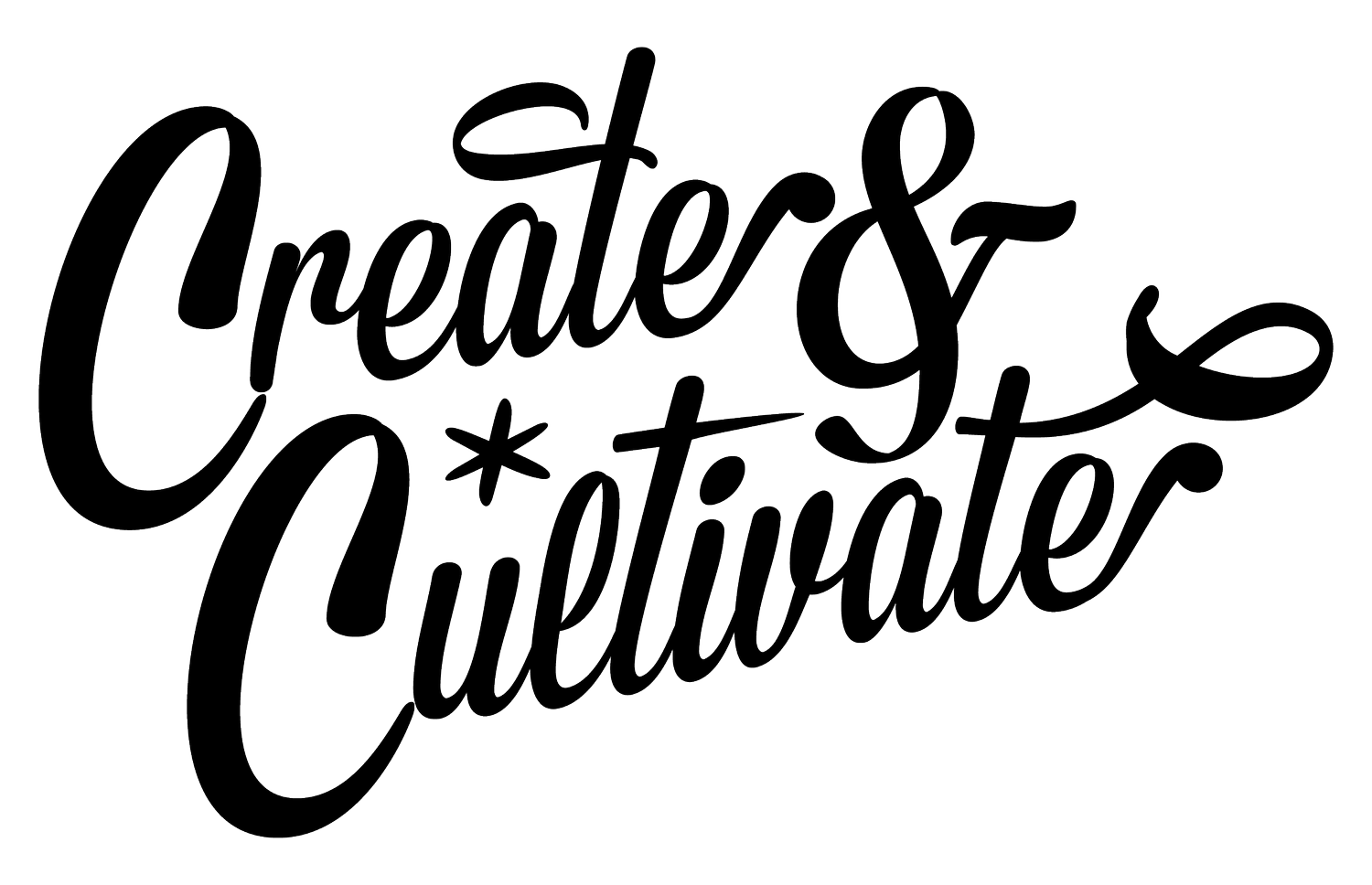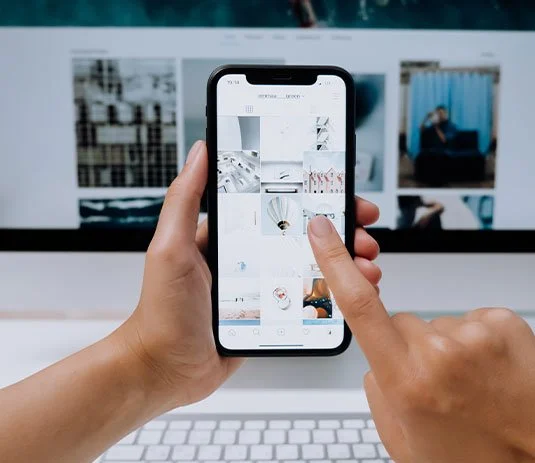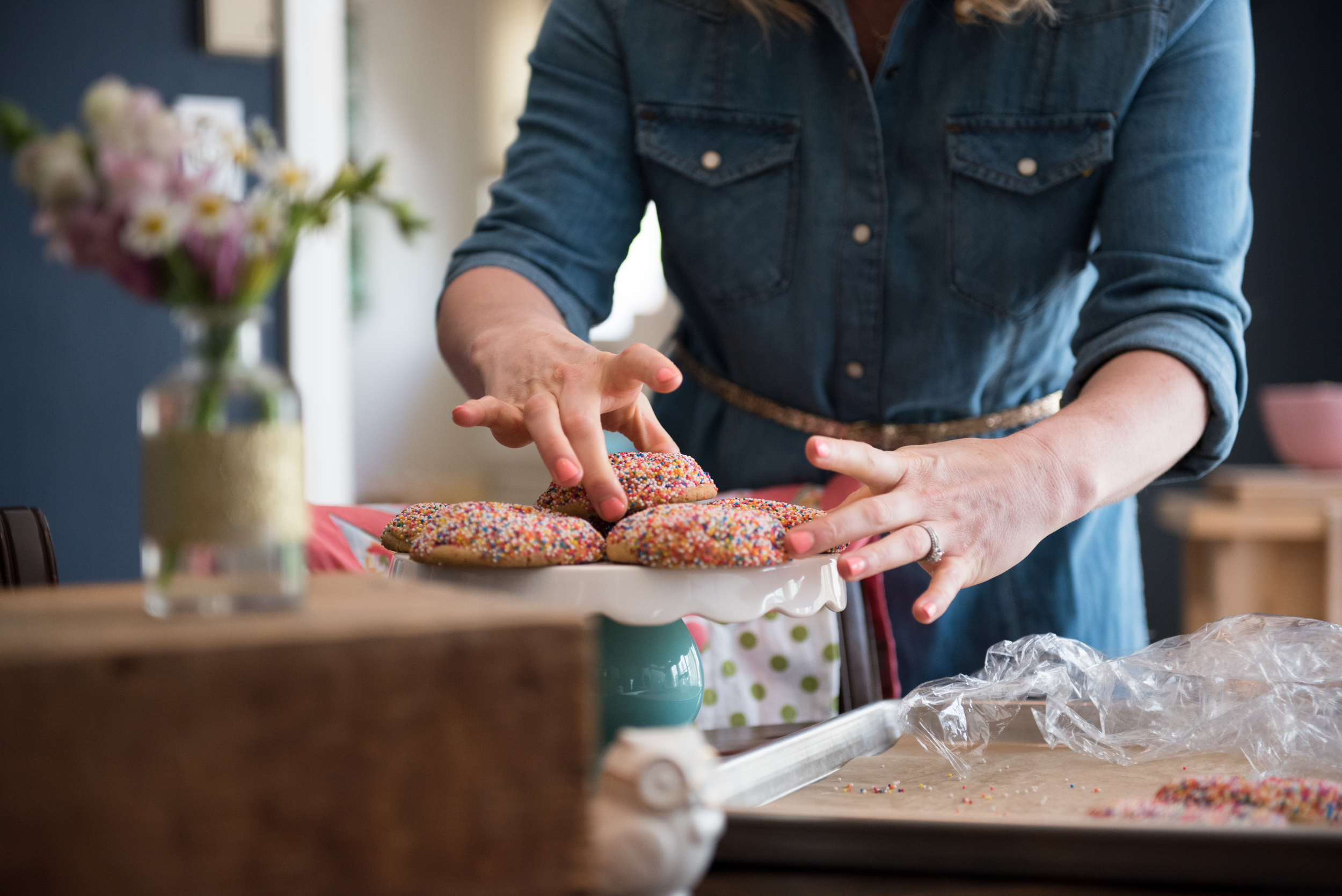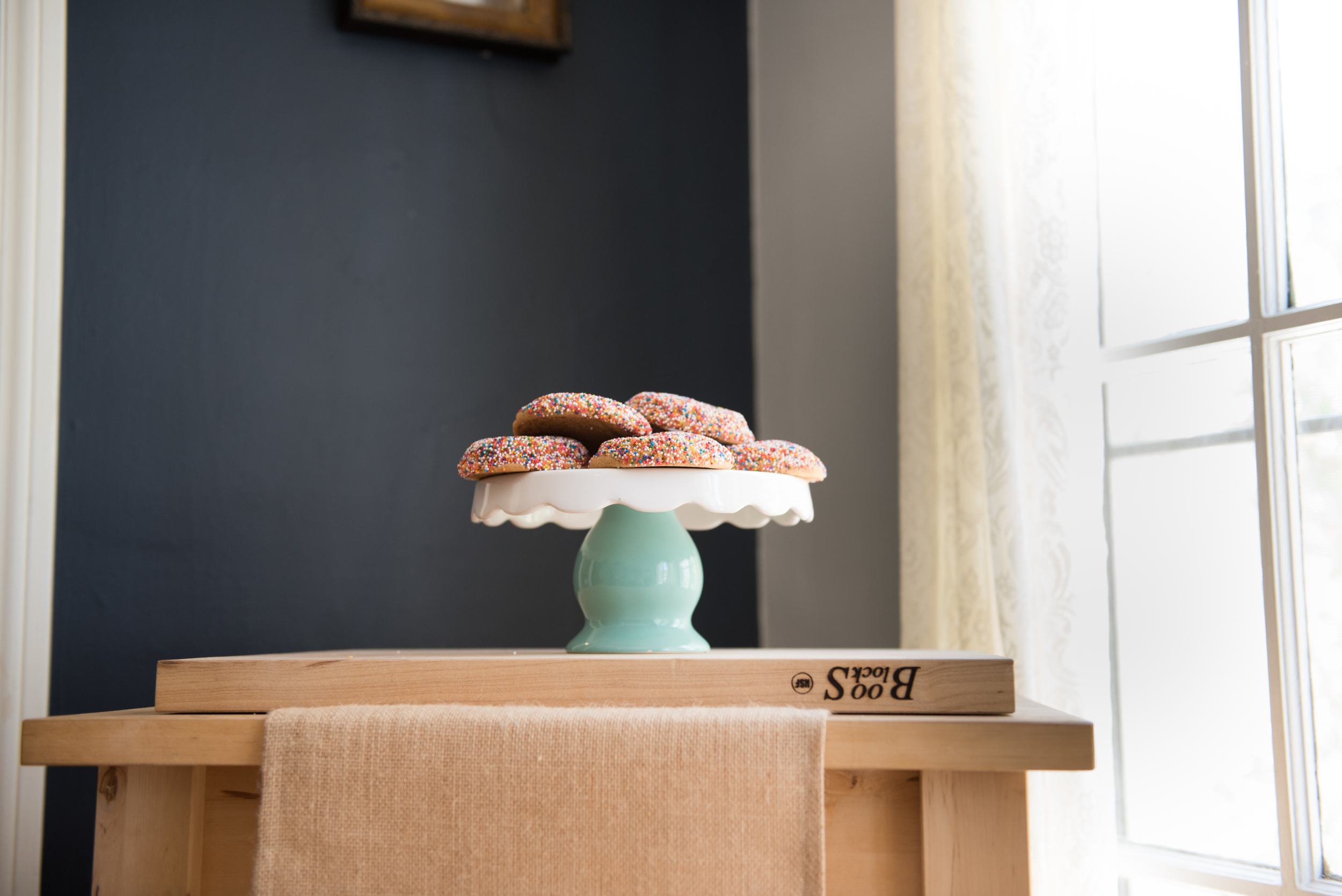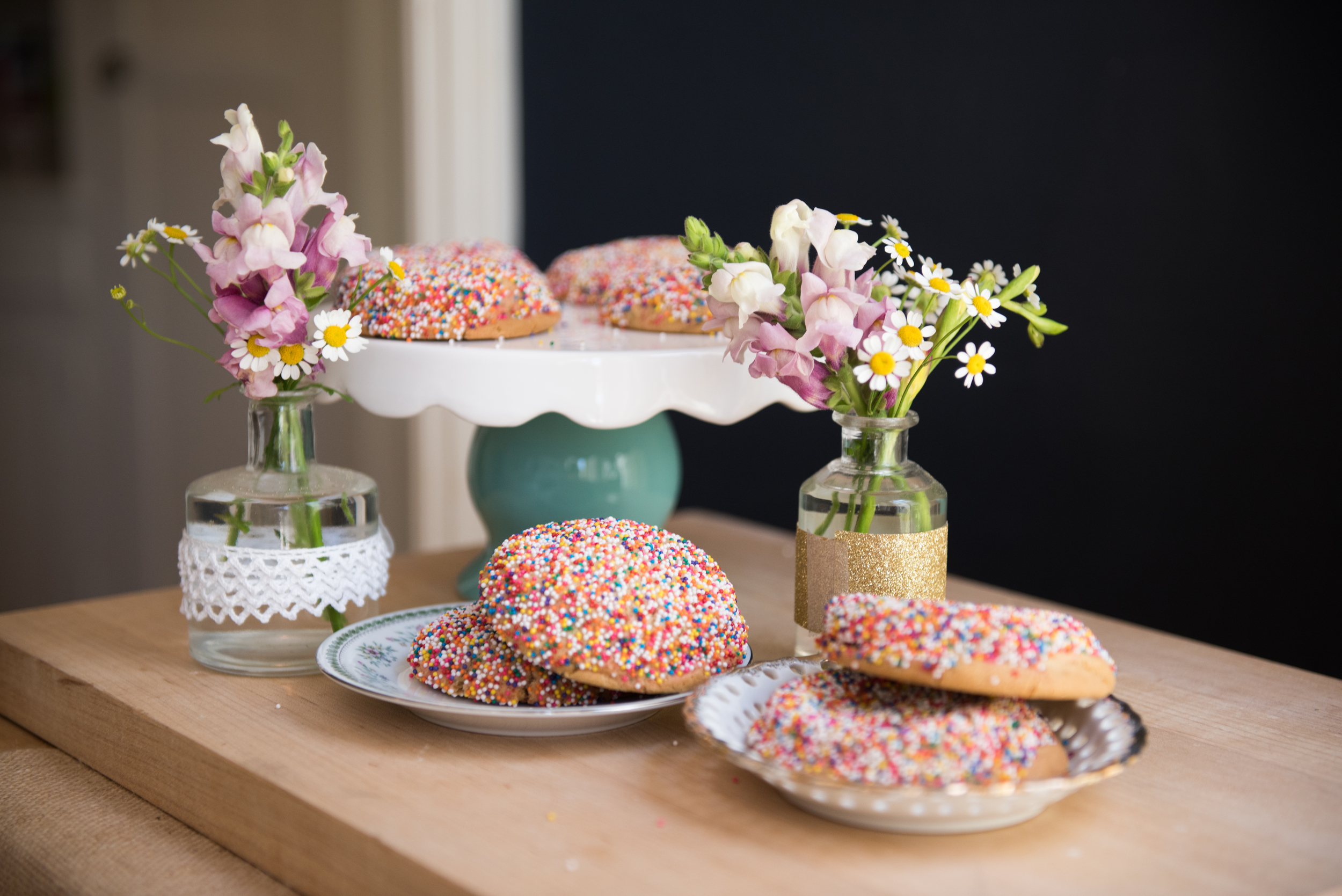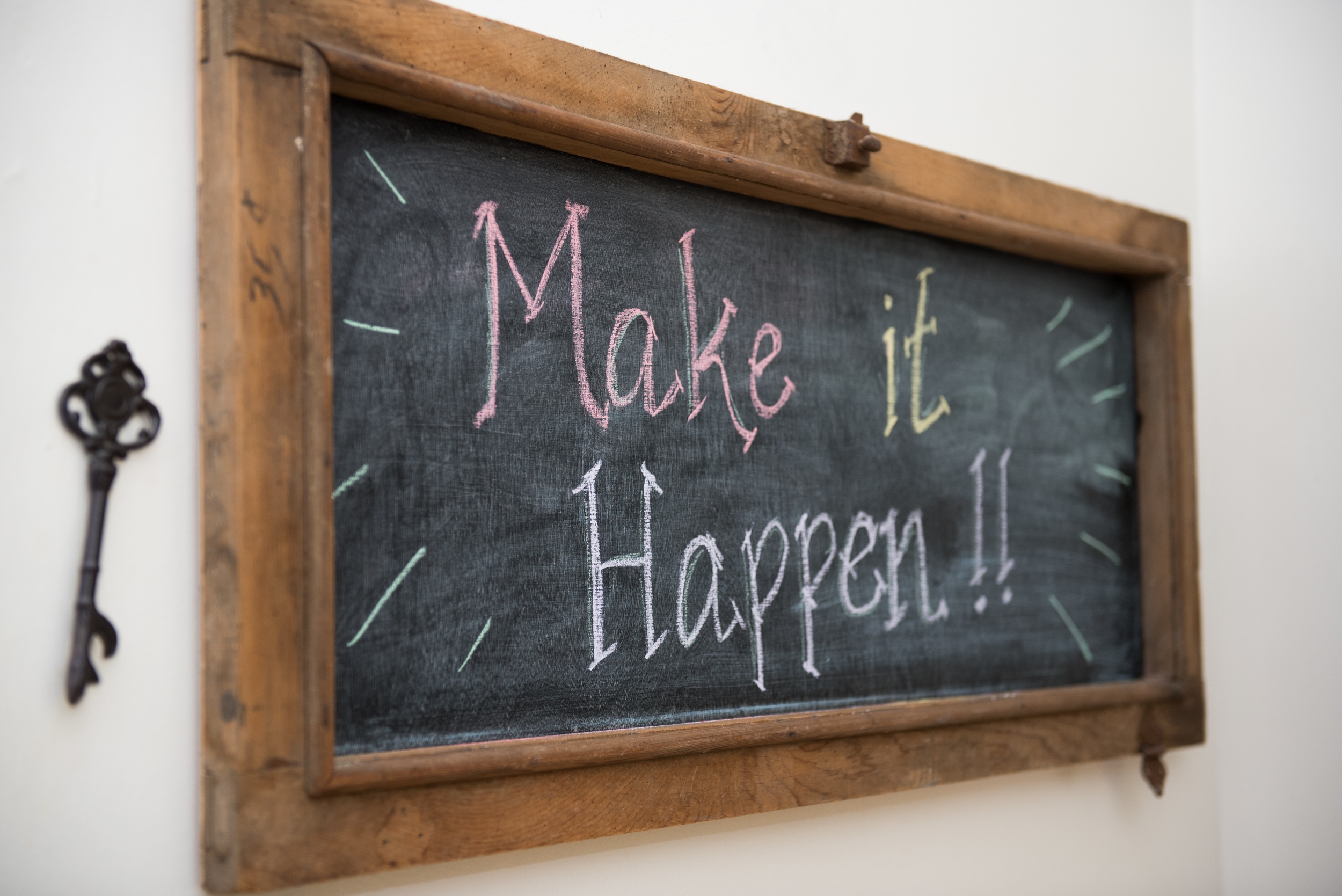This Shocking Detail Is Going to Change the Way You Use Instagram
The social times are a-chh-h-anging.
photo credit: Becki Smith/ Smith House Photography
Photos came first and then Instagram changed the entire game. On a monthly basis Instagram is used by 700M plus people worldwide. And it's not only influencers. Brands have totally revamped their marketing strategies and rely on the social platform to grow their businesses. That’s huge. And it’s not going away.
At Create & Cultivate NYC, we chatted Claudine Cazian, Lila King, Lauren Wirtzer-Seawood, and Virginia Nam, all of whom work in different verticals at the social platform, about how to do it right and drive impact in a meaningful way.
It may come as a surprise that the concept of "get your grid right," is shifting. No doubt, people love pretty pics, but Cazian, Head of Entertainment Partnerships at Instagram, says that old way of thinking of the 'gram is wrong. (Don't stress, yet.)
Social is changing. The way we use social is changing. And you should assume that your strategy should shift as the platform does.
1. RIGHT NOW, FOCUS on MAKING STORIES YOUR NO. 1
You may be surprised to hear that right now it’s more about your Insta Stories, and the “Explore” section, over the actual “feed experience.”
In the last year since Instagram added Stories, it has added 100 million global users to the platform. That means, those 100 million user have never known IG without Stories. It's a vital part of how they do social-- and it's where you should be focusing your efforts as well.
As to how? Cazian says 5-8 great stories per day is a solid number and will help grow your following.
"5-8 great Instagram Stories per day will help grow your following."
Tweet this.
If you’re working a big event, Virginia Nam, who works on the fashion partnerships team with Eva Chen, says that you should “front load the best content.” People don't love seeing a million tiny dashes, but if the first 5-8 stories are compelling it will draw them in to watch the rest. If you're posting so-so content as you go, you're more likely to lose their attention.
When it comes to creating compelling Story content, Lila King, who leads global news and publisher partnerships, suggests using different formats (i.e. a still, followed by a video, followed by some Boomerangs) and mixing it up is key! Throw in some front-facing (#selfies) with some rear-facing camera action. People want to see the behind-the-scenes. And even though "news" isn't typically associated with selfies, King says people love to see "the human factor."
2. YOUR ENGAGEMENT IS MORE IMPORTANT THAN YOUR GRID
This might be hard to hear, but when it comes to engagement and content, Instagram is “mobile first.” So while we’ve been working hard to “get our grids right,” Instagram is all about “real-time” in-the-moment pics. All four women agreed that pretty, neat, "mosaic patterns," etc., are not what's driving new followers to your page. And four out of four said that making it pretty is currently the wrong strategy. "It's engagement over grid, every time," said Cazian.
At the conference, panel moderator Arianna Schioldager asked the crowd, “How many of you don't post videos because you are scared of how messy it makes your feed?” A sea of hands raised. “GET OVER IT!” called out Cabizan. “It’s a huge opportunity you are missing.”
Most people are using Instagram via their feed, which means you have to hook them while they are scrolling.
3. THINK ABOUT THE EXPLORE PAGE & THEN STOCK THOSE SHELVES
When you think IG, your first thought should be how people consume social. To see it in real time, take a trip over to Instagram’s Explore page and look at how the content is displayed.
Since “Stories” are the first thing in the “Explore” section, followed by “Video” (which is super attention-grabbing), then followed by "Photos," you need to make sure you keep your “shelves” stocked with content.
If you aren’t creating content for all three mediums, you are missing out on exposure opportunities at every turn, shared Lauren Wirtzer-Seawood, Head of Music Partnerships.
4. SHOULD YOU TURN YOUR PROFILE INTO A BIZ?
Are you a brand or a person? Or are you a little of both? If your goal is to grow your following and you have a business, it seems obvious that you should have a business profile. But some things are too big to see.
Some bloggers and influencers have been reluctant to do this. They want to remain authentic to their audience. They don’t want to feel like they’ve ‘sold out.’ But it’s possible that you’re selling yourself short.
Business profiles have hidden benefits. You can access your Insights, have people contact you, and sponsor a post every now and then.
5. ACCOUNTS WHO ARE USING THE NEW FEATURES WELL
Virginia Nam highligted Philip Lim as a fashion brand using the carousel feature the right way. She specifically references this post, as a one that really got it right. It shows a final product and the behind-the-scenes content people crave.
Lila King shared that the The NY Times does a great job with their IG Stories content.
Arianna Schioldager is Editor-in-Chief at Create & Cultivate. You can follow her @ariannawrotethis.
How are you using Instagram's new features to grow? Share in the comments below!
MORE FROM OUR BLOG
The 5 Keys to Conquering Your Credit
Do you know how healthy your finances are?
Sponsored ad by Chase Slate®
How would you answer these questions: “Do you have healthy finances?” “Do you often spend more than you make every month and dip into your savings?” “Do you know where the BULK of your income is going?”
Chances are good you said “yes,” to the first question, “maybe” to the second, and “no” to the last. Everyone wants to think that they are doing well (or at least OK) financially, but we also innately avoid looking at the nitty gritty dollar details. The ones that make us do a double take and realize, maybe our finances aren’t actually that healthy. The cost of living is high (!!) and that can be hard to stomach.
So, what’s a modern working millennial woman to do? Rip off your blinders and look. According to Brittney Castro, Certified Financial Planner™ and Chase Financial Education Ambassador, it’s the only way for you to secure your future and status as a financially wise woman.
“As a Certified Financial Planner™,” Castro shares, “I talk to modern millennial women all the time, and I think it’s important to recognize that women in this age group have a diverse mix of financial goals, from paying off student loans, to increasing their income, to improving their credit, to saving for a down payment on a house.”
What you do with your money today drastically impacts your future. If you’re wondering where to begin, read through Brittney’s five keys to conquering your credit and achieving financial health below. Then, check her out at #CreateCultivateNYC this May where she’ll be speaking on a panel on behalf of Chase Slate.
MAKE A MONEY DATE WITH YOURSELF
You make regular dates to check in with friends and family. See how they’re doing and what’s going on in their lives. The same concept can (and should) be applied to your finances. If you don’t know where your money is going, there’s a good chance you’re not doing the best at saving.
So, make a date. Put it in your calendar and don’t flake!
Brittney suggests this plan of action:
- Schedule a specific time, once a week, to review and plan your budget. This can empower you to keep tabs on your spending habits.
- During your money date, plan for upcoming expenses, such as birthday gifts or special outings, and adjust your budget accordingly.
PAY YOUR BILLS ON TIME
“Another simple but powerful way to improve your financial health – pay all your bills on time,” says Brittney.
“Payment history is the most important factor when it comes to calculating your credit score (generally 35 percent of the score),” she says.
Building credit is an important part of financial health. There are many big steps (ahem, buying a home) that aren’t possible without good credit. Even if you think you’re going to be renting forever (get financially savvy and you won’t!) you need to take the steps right now to secure your future.
According to Brittney, “The credit information that a lender requests could mean the difference between paying huge interest fees and potentially securing the deals we want.”
The gist? “Set up payment reminders or enroll in automatic payments so you’ll never forget,” says Brittney.
USE THE TOOLS THAT ARE READILY AVAILABLE TO YOU
The internet actually wants you to succeed. It’s true! The information superhighway is literally an information SUPERHIGHWAY that charts ALL OF YOUR SPENDING. You don’t have to balance a checkbook or tally up receipts. It’s all there waiting for you to explore.
Brittney says, “Take advantage of tools that empower you to make savvy financial decisions and manage your credit and finances with confidence.” Whether you’re using your smartphone or your laptop, there are numerous services and apps that want you to succeed!
“For example,” says Brittney, “The Chase Slate Credit Dashboard gives cardmembers access to their FICO® Score and a graphical analysis of their 12-month score history.”
Knowing your credit score helps you assess where you stand and how close or far you are from achieving your goals and creating the life you want.
GO ONE STEP FURTHER BY CHECKING YOUR CREDIT REPORT
In addition to monitoring your credit score, checking your credit report is essential to making smart financial decisions.
“Visit www.AnnualCreditReport.com to get a free, in-depth overview of your credit history,” says Brittney. “Review the report closely for any errors – late payments or amounts owed that are incorrectly listed – and immediately remedy with the credit bureau.”
And if you think checking your credit report might negatively impact your score – think again! When a lender makes an inquiry – a request for your credit report information – there is a small impact on your credit score. However, these so-called “hard inquiries," which can happen when you apply for new credit or a loan, begin to fade in impact after the first 12 months and drop off your credit report completely after two years.
WHEN IN DOUBT, USE THE 50-30-20 RULE
What’s that? Brittney explains, “Using this rule – 50 percent of what you earn (net income after taxes) is allocated to living expenses, 30 percent is spent on nonessentials (like eating out and shopping) and the remaining 20 percent goes to your savings account. This approach is easy to implement, and can be adjusted to your personal money priorities.”
While we tend to notice the big expenses (as they make the biggest immediate dent in our savings), it’s often the little ones that get us in the end. Every time you order takeout, press BUY on the pair of shoes you’ve been eyeing, or opt for a morning latte at your local coffee shop instead of making coffee at home, you’re spending money that could easily be put in your savings, or go toward paying your bills.
Let’s think about the coffee example for just a second (and actually do the math). If you buy a latte every morning at $4/cup, seven days a week, 365 days per year, that’s over $1,400.00 dollars in lattes (!). The cost of pressed juice is even higher.
Use the 50-30-20 rule to determine exactly how much of your income you can safely allocate to these types of non-essentials. Then, you can move forward with confidence, knowing you’re making steady progress toward your financial goals.
Have other financial questions? If you’re heading to NYC, write them down and be ready to ask Brittney during the Q&A when she joins us on “Just Do It: A Real World Guide to Channeling Your Entrepreneurial Spirit” on behalf of Chase Slate.
MORE FROM OUR BLOG
A Savvy President Shares Her Rebranding Secrets
How Michelle Newbery turned a small lighting website into a high-end furnishings destination.
Company president Michelle Newbery, who leads the team at online home furnishings retailer The Mine (née ATGStores.com), is fast becoming a recognizable player in a very competitive market niche. In the fast-paced world of interior design, where bright ideas often burn out as fast as they’re born, The Mine’s star is on the rise.
And, thanks to this experience and many others, Newbery’s got some amazing tips on how to navigate the executive arena.
She joined the company in December, 2011, as its chief financial officer, and is now spearheading the biggest rebrand in the company’s history as its president. Along the way, she’s also refining the corporate mission and establishing the importance of social responsibility through the company’s philanthropy program, which focuses on community giving and environmental stewardship.
Read her four tips on how to stake your claim in the business world.
POLITE PERSISTENCE PAYS OFF
Just because you get a “no” doesn’t mean it will stay a “no.” And, turning things around doesn’t require being overly aggressive. For me, polite persistence has paid off. I was told ‘”no” when I expressed an interest in being president at The Mine. I had to ask more than once, and I’m so very glad I did. We often have a tendency to stop when we hit a wall rather than trying to find a way around it – or over it.
BE VISIBLE AND ACCESSIBLE
Make sure your team knows who you are and how they can reach you. At The Mine, I meet with each new team member after they settle into their new role to ensure they know who I am and where they can find me. I think the best way to let people know you care is to ask them how they’re doing, and doing that almost always results in great insight into what a person needs to be happy and excel. Everyone feels better when they’re assured they’re part of a great team and that management is ready to help.
FOCUS ON BUILDING RELATIONSHIPS VS. COMPLETING TASKS
How you get things done is just as important as what gets done. I’ve heard people say, “I don’t care how it gets done – just get it done.” But, how well does that set the stage for the next task, or improve the work environment? I find that encouraging teamwork and being aware of others’ needs results in better efficiency and quality.
“How you get things done is just as important as what gets done.”
Tweet this.
Our team does an amazing job of going above and beyond when working together as well as with our partners. In the e-commerce space, we move fast and there is no time for egos or attitudes. I absolutely love it when I hear, “Your team was so easy to work with.”
PLAY THE LONG GAME
Put as much thought into your long-term future as you do your daily tasks. Before you commit to something today, make sure it’s aligned to what you want to accomplish tomorrow; in your work, your career and your life. I moved to Seattle five years ago and it was very intimidating in the short term, but it allowed me to immerse myself in the e-commerce space and take advantage of amazing opportunities I would’ve missed had I not made the leap.
MORE FROM OUR BLOG
The One Question 99% of Male Investors Asked This Start-Up Founder
But never asked her CEO husband.
photo credit: Sight Unseen
Today at the inaugural Vanity Fair Founders Fair in Brooklyn, Neil Blumenthal, co-founder and CEO of Warby Parker, openly shared his personal experience with raising money and how much it differed from his wife’s, Rachel Blumenthal, experience.
“When my wife was raising money,” the CEO shared with the crowd, “every male VC would ask, ‘How do you spend your time?’ She would say, ‘What do you mean?’ What they meant was, ‘You have kids.’” This was always a deterrent for male investors.
Rachel, who was in attendance, is the founder of the subscription kids’ clothing startup Rockets of Awesome. The brand sends a personalized box of 12 pieces of clothing per child at the beginning of each season, four times a year. Gwyneth Paltrow is a notable fan.
Neil went on to say, “When I raised money VCs would use kids as a reason to bond with me. ‘Oh I have a great nanny recommendation.’ It’s insanity.”
To her credit, Rachel did not go with the 99% of male investors who asked her that question. Nor was she deterred. Rockets of Awesome recently raised $12.5 million in Series A funding. The round was led by new investor August Capital, an early backer of e-commerce giant Zulily, joined by existing investors Forerunner Ventures and General Catalyst. This infusion of capital brings Rockets of Awesome's total fundraising to just under $20 million in the six months since launch.
Other notable takeaways include actress and founder of Draper James, Reese Witherspoon, telling the audience, “A guy has one hit and they say he’s going to win an Oscar. A guy has one movie at Sundance and he gets Jurassic Park,” she explained. “A woman has a hit at Sundance and she has to make six more movies.”
Reese also told the crowd, “If it’s not moving, monogram it.”
For more BTS on the day follow along on our IG Stories here.
MORE FROM OUR BLOG
Exclusive Interview: How This Wedding Company Just Changed the Entire Game
Guess what? You can enjoy wedding planning now.
Big day. Dream wedding. I do. There is major pressure around weddings, but Zola is determined to streamline the process for the ease, comfort, and bliss of new couples. Taking you from planning stages through your first year, the wedding-meets-tech company just released brand new functionality with Zola Weddings, a free suite of wedding planning tools including: your wedding website, registry, check list, and guest list all in one place. Reread that. It's everything in ONE PLACE. It not only saves you time, but major wedding headaches, so you don't have to get bogged down in details. Keeping track of your guest list? No problem. (Mapping your seating chart, that's still on you.) The company's co-founders took to the Zola blog to announce, "Today, we’re so excited to introduce you to Zola Weddings, a suite of wedding planning tools including your wedding website, registry, checklist, and guest list all in one place. And because couples have enough quotes and bills to take care of, we made these tools entirely free to use."
We caught up with Jennifer Spector, Director of Brand at Zola, to find out more about the new suite and why she wishes it was around when she was planning her wedding. As she says, "My wedding planner described weddings as a live performance, a family reunion, a religious ceremony, and the biggest party you’ve ever thrown, all in one day. That is a lot."
What were you hearing from couples and users that made you realize now was the right time for Zola to expand the brand? Why become a one-stop shop?
Since Zola was founded in 2013, we have consistently heard from couples that they wish their wedding websites could be as beautiful and easy to use as their registry. As we have grown, these requests have only gotten louder. Once we decided to build websites for couples, we took a step back and asked ourselves, how else can we help people plan their wedding? The average couple uses 3+ wedding tools to plan their wedding, which is just one part of the planning process. We realized we had to do more, wedding planning was outdated and today’s couples were spending all their time stressed out, instead of enjoying their engagement. So we created Zola Weddings - a free suite of wedding planning tools that includes your wedding website, a customizable checklist, guest list manager, and your registry, all in one place and all for free.
How did the company determine what functionality and platforms to include?
At it’s heart, Zola is a technology company and is focused on delivering the best possible experience to couples and their guests. Most other wedding companies are focused on inspiration, and the look and feel of your wedding day. But for anyone who has planned a wedding (or been involved in a friend’s wedding), there really are a year’s worth of details that take a lot of time and energy. So we focused on streamlining the logistics and planning, so that you can take pleasure in the day of your wedding, not all the endless details that pile up. The biggest pain points we heard from couples were around getting everything done, managing timelines, handling guest communication, and having one place to do it all. By having our Wedding Website, Checklist, Guest List, and Registry all in once place, couples can stay organized at home or on mobile, and take the pain out of planning what should be a wonderful celebration. Zola Weddings is so easy to use, that you can focus on your wedding day, not collecting RSVPs, or remembering to pay the deposit for the band.
Piggybacking on that, you said you wish this was around when you were getting married. What are the functions and tools that you’re most excited by?
I got married in 2015, and two of my biggest challenges were creating our wedding website and keeping track of our guest list. The wedding website becomes this bottleneck for many people, myself included, because before you send out save the dates you need to have all your information on your website. The details need to be close to final. We used what was supposed to be a very simple website builder, but it took weeks and was really frustrating. So I really wish I could have used Zola’s Wedding Websites, because the designs are beautiful and fit with any wedding theme, but it is so easy to use that you don’t need to know how to code, or sacrifice your style with a cheesy theme. For the guest list, my husband and I had our guests, and then both sets of our parents had lists. It became a puzzle fitting it all together and trying to get information from people. Zola’s Guest List manager solves that.
Speaking of, the automated guest list sounds like a GAME-changer. To totally nix the old-school invite, mail-in RSVPS, and to also manage gifts and thank you notes in one place— you’ve saved the new couple so much time. Is time a major factor for the millennial couple?
Yes the Guest List is a total game changer! Time is a major factor for the millennial couple, planning a wedding becomes like a second job for many people because there are so many details and logistics. Today’s couples can order anything from their phone but when it comes to wedding planning everything is so analog. Our Website, Checklist, Guest List, and Registry bring wedding planning into the 21st century, and help simplify and save time.
What are the main considerations for a company when rebranding? Especially online. People get used to an interface and can get thrown when they see something new.
For Zola, we always had an incredibly well-designed site and mobile experience. Our tech, product, and design team is incredible. So our rebrand was less about changing the site or the experience, and more about adding warmth and humor to the brand. I joined Zola right after my wedding, because I had fallen in love with the experience, and wanted to share that obsession with anyone getting married or buying a wedding gift. We approached the rebrand as a way to share our story with couples and their guests. So we relaxed the brand a bit from being quite minimal, to livening things up with more color, whimsy and a personalized tone. We A/B tested every change on the site to make sure that any new addition did not negatively impact our user experience. The result has been a great marriage of new form but the same superior function.
Your pool of millennial users is massive, but in an ideal world, they’re also one-time users. How do you deal with this as a brand?
Ideally our couples only get married once, but they are guests at other people’s weddings, and continue to shop the site after they are married. Zola Registry is an ecommerce site with over 450 brands and almost 50,000 gifts and experiences that we curate. Many couples rely on us to decorate their entire home, long after they are married. So as a company, we want to make sure the experience as strong whether you are a couple or a guest so you will continue to come back and refer friends to use the site.
Big day. Dream wedding. There’s a lot of high pressure marketing lingo around weddings. And globally, it’s a 300 billion dollar business. Does it ever feel like the pressure to ‘perform’ is greater because of those factors?
100%. My wedding planner described weddings as a live performance, a family reunion, a religious ceremony, and the biggest party you’ve ever thrown, all into one day. That is a lot. Then if you add on all of the wedding content online and on social media, it can be quite overwhelming. My advice to couples is to think about the day after, and the year after your wedding - what do you want to remember? Then reverse engineer your celebration to make sure you make those memories, and forget about everything else that won’t be memorable or important to you. The best weddings are the ones where the couple is having the time of their lives, people just want to see you happy!
Is it exciting to be in the middle of an industry that’s in transition?
It is definitely exciting to be in the middle of a company that is transforming the wedding industry. But the industry in general is still quite traditional, and the act of getting married is still very traditional. Even though couples are changing societal norms in many ways, they are still getting married and still celebrating in the same ways that their parents celebrated. So that is what is very exciting - how do we take this very traditional, emotional, and important time, and make it easier and more modern without sacrificing any of the sentimentality or specialness of the occasion. That is most exciting - making couples happy during the happiest time of their lives!
Whether you’re hitched, engaged, or making guest appearances at several nuptials this season, sign up now to use Zola Weddings here for free! And for any NYC-based peeps, celebrate the launch of Zola Weddings with the Zola Retreat this Saturday. Experience some chill vibes and serious om at 43 Crosby Street this Saturday, April 22, 11AM – 4PM. Here’s a sneak peek at what you can expect.
MORE FROM OUR BLOG
The Power of Personalization (And Why It's Not A Fad)
What's your call-sign?
photo by Mark and Graham
Initials. Nicknames. Catchphrases. We’ve all got ‘em.
Maybe it’s a nickname you were given as a kid, and you’ve grown to love. Maybe it’s a motto that you’ve chosen to live your life by. Whatever it may be, there’s a nostalgia that comes along with adopting something that represents you to the outside world.
Back in the day (‘90s babies, we’re looking at you), monogramming was the easiest way for you (and let’s be honest, your parents) to easily identify your backpack in the sea of other Jansport carry-alls.
But as we’ve gotten older (and hopefully more mature…), we’ve brought our desire for product personalization with us. We’ve gone as far as wanting to don our personal branding on denim jackets, leather totes, even bandanas.
What is it that we love so much about adding our personal imprint onto things? Well, think of it like a fingerprint, it’s distinct to you and symbolizes ownership, which frankly, makes us feel special, maybe even a little important.
Mark & Graham, a leather goods and timeless gifts company, recognized the emotional connection we have to adding our emblems on products and capitalized on it, BIG TIME.
Not only do they offer monogramming as an easy add-on to each order, they also make the monogramming options anything but uniform — with over 100 ways to customize each monogram. That’s a whole lot of options and boy, do we love it!
Adding a personal touch to your job application could be the difference between landing the interview and getting stuck in the abyss with all the other generic, predictable resume.
What if we took this same principle and applied it to something maybe a little less glamorous? Say, the job hunt? Or our office? Hear us out for a minute!
Adding a personal touch to your job application could be the difference between landing the interview and getting stuck in the abyss with all the other generic, predictable resumes…. and we don’t want that for you.
So, let’s talk about how you separate yourself from the pack by injecting a little personality! Hint: it’s time to ditch the Times New Roman and shed the frivolous space-fillers.
Jazz Up the Format
Whether they admit it or not, most people are driven by aesthetics. They like things that are clean, curated, and look like a decent amount of thought went into putting it together (it’s why we love Instagram so much). Your resume should be no different. Add personal design touches by mixing up the format, injecting a signature color, or even adding in the logo from your blog you’ve been curating for years.
Want to make design changes, but don’t feel exactly design-inclined? Head to marketplaces like Etsy, where people put their graphic design backgrounds to good use and make one-of-a-kind templates that you can purchase and then populate with your information!
Tailor the Content
You’ve heard it a thousand times, but for good reason. It may take longer, but spend the time editing your resume to best fit the job description you are applying for. Why take up prime real estate on your resume with something that doesn’t pertain to the exact job at hand? Personalize it to the job you are applying for. Everyone wants to feel a little special.
Once, you’ve landed the job…
Personalize your Space
No matter what kind of desk you have -- cubicle, co-working, or corner office, there are ways to make your space say, hey world, this is my little corner of the working universe. Perhaps a Leather Charger Rollup, so no one gets confused about whose is whose. A monogrammed Copper Pencil Cup is also a brilliant idea for making sure you write down your brilliant ideas. (Also serves as a wonderful gift for a co-worker…) And a personal Desk Embosser has the word ‘boss’ in it for good reason.
Tell us, how are you standing out and adding your personal touch to life?
MORE FROM THE BLOG
When Having No Idea What You're Doing Is the Best Plan
Carly de Castro, co-founder of Pressed talks being green in business and green juice.
Green juice changed Carly de Castro's life.
After moving home to Los Angeles to take care of her mother, who was suffering from terminal cancer, she met up with two childhood friends: Hayden Slater and Hedi Gores.
She had been using green juice to improve her mom's quality of life, and simultaneously turned her own health around. At the time, Carly says, "There were very few options for pressed, bottled juice." And so the three set out to open a local juice company, with the mission of making health affordable and available to everyone.
Pressed Juicery served its first customers in 2010.
"I really wanted to spread the message that one small healthy habit could have a ripple effect," Carly says, "and change your whole life."
The flagship spot was a tiny walk-up in the fountain courtyard of Brentwood Town Center. It ignited a West Coast juice revolution. Eight years later, the company now employs over 500 people and is serving its signature cold-pressed concoctions in over 30 locations.
We chatted with Carly about being green, not having any business experience when she started, and why she'll always pay attention to what competitors are doing.
What was the scariest part of opening Pressed?
Having no experience! Neither my partners nor myself had any business experience. In fact we all came from production and agency work. Nothing could have prepared us for the long nights of juicing, learning how to run a retail business as well as food manufacturing. We sort of went into it blindly and it was the best and worst thing we ever did. Being naive kept us optimistic and open, and it also was a very humbling experience.
Do you remember the first day Brentwood opened? What were you feeling?
I remember it vividly. I had been up most of the night with my partner, Hayden. I stayed with him juicing until about 1am, and he kept going until 4 or 5 so that I could go home and get my rest for our first day open. I worked the shop all day, inviting friends and family to come for free juice samples so that we could make sure the space was full and energized. I felt a lot of things that day- mostly exhilaration that we had managed to open, but also a little fear having people try our product for the first time. Surprisingly, what I remember most is how little people were familiar with pressed juice and how much explaining we had to do about the product.
Did any of those emotions stick around even as you headed into double-digit locations?
I always feel a pang of nerves when we enter a new location and especially new markets. While we have gained so much great experience with the logistics of opening a store, I still hope for customer satisfaction and want the stores to feel like they fit naturally into their new neighborhoods. The biggest change has been that we have an incredible team of over 500 employees behind us, supporting our mission and making sure that we can have a successful opening every time. That puts my mind at ease (as much as it can be!) and makes it easier to sleep than in the beginning.
Did you ever think that Pressed could become the phenomena it has?
Honestly, no. I didn't really think that far ahead, and certainly when we opened no one was doing this exact product on this scale, so it didn't occur to me that we could ever get to this size and maintain quality. Luckily I was proven wrong, as our incredible team has grown and made this possible. Our goal was to be the best quality, best tasting pressed juice that we had ever had, and if it was good enough for us, then we felt it was good enough for customers. That is still our standard today, and it's really exciting that it is able to reach more and more people than I ever imagined possible. It really has validated my belief that this is a product that can help change your life. We didn't invent the wheel, we just decided to make accessible something that we believe should be available to everyone.
Pro Tip: We didn't invent the wheel. We made it accessible.
Tweet this.
Can you talk about a few mistakes you made in the beginning?
Like I said, we started this business very green. We had no prior experience, so we definitely made some decisions that we thought were "best" for the company but which did not turn out well because ultimately they didn't follow our intention and our model. One example is that for our third location, we decided to introduce smoothies without doing any research into whether customers wanted them. We thought that maybe we needed to offer more to customers, but ultimately they didn't really work. We lost touch with who we were a little. Ultimately, we made a decision to focus on our core competency which was making the best bottled, pressed juices around, knowing that if people want smoothies, they could find them somewhere else, and hopefully they would still come to get juice from us, which we find that they do. Learning to focus and hone in on a very clear mission was a great lesson and has allowed us to scale our business.
How do you handle competition in the juice space?
For me, as I mentioned it’s important to stay true to our mission and remind myself why we started this company – to make high nutrition a realistic option for everyone. We are always going to pay attention to what other brands are doing, but we also have to realize we are not going to be everything for everyone and be okay with that too. At Pressed Juicery we aim to make every decision with our mission in mind, and while I’m not going to say that we’ve never been intrigued or distracted by something a competitor has been doing, the last five years has really helped us realize that staying true to our core values is one of the most important parts of our brand’s success.
Do you think it’s important to build community while building a brand?
Absolutely, the communities that surround our stores are what have truly created the Pressed Juicery lifestyle. Each of our stores draws inspiration from the surrounding community while remaining true to the brand. We are also extremely dedicated to giving back to our communities. We regularly participate in local charitable initiatives and are actually launching a larger concept that we will be introducing later this year – I can’t share all of the details at this time but I’m thrilled to be working on such an amazing project.
Looking to the future, what’s next for Pressed? How do you continually evolve the market trend?
Last year we expanded to New York, New Jersey and Las Vegas and this year we’ll be opening additional stores in New York and more locations in existing and new markets including Hawaii and Washington to further support our mission. We’ll also be expanding the availability of Freeze, our vegan, dairy-free, gluten-free frozen treat that is made from only the ingredients in our juices. It’s the perfect guilt-free summer (or anytime!) treat and is also a great healthy option for kids. I’m so excited for more people to have the chance to try it. We’ll also be continuing to introduce new seasonal offerings to our menu. We try to maintain the balance of experimenting with new products while also sticking to our core values and doing what we do best – creating delicious cold-pressed juices. As I mentioned, while our smoothies didn’t work, Freeze did and it’s important to us to continue to experiment but to never lose sight of who we are. We’re fortunate in that because we are primarily a retail brand, we get so much face time with our customers, so we can really interact with them and get their feedback firsthand in our stores – their input is constantly influencing our new product offerings.
What does “Living Well” mean to you?
Pressed Juicery and The Chalkboard are an extension of myself. The whole idea around "Living Well" is this notion that none of us are perfect, but that all of us have so much to learn and also, so much to teach. If we each opened ourselves up to a little knowledge and self-improvement in all areas of our life-- mental, physical, spiritual- the possibility for health in the most whole sense of the word would be limitless.
"Living Well" is really a simple concept. It's about spending a few moments each day to set intentions, to make plans or cultivate small habits and ideas that make you feel good. It's not about comparing yourself. No one's life is as perfect as it appears. Our challenge isn't to be complete, but to be kind to ourselves. A green juice a day changed my life in huge ways, but I recognize that that's not the secret sauce for everyone-- maybe it's a mindfulness practice, going on a hike with your dog, a poem a day, cooking a beautiful meal, making thoughtful gifts for friends-- whatever it is that makes you feel full-- DO IT. It can be simple and not stressful, it just takes being gentle with ourselves and remembering that this is a ride full of ups and downs and the best we can do is to challenge ourselves to live honestly and gratefully.
Mom and business woman. What does the concept of ‘having it all’ mean to you?
Having it all is a myth-- I always feel like I'm searching, which is part of the impetus to reach higher, to be better. Being a mother is the most life-altering, fulfilling thing I have ever done. It is my greatest teacher by far, and I always will put that first no matter what. But having this business makes being a mom a really interesting experience. Sometimes in good ways, sometimes in bad ways.
"Having it all is a myth-- I always feel like I'm searching, which is part of the impetus to reach higher, to be better."
Tweet this.
The thing I've learned is that you can never be everything to everyone, and you do need to choose sometimes. For me that has meant calling on family, friends and colleagues to step in and help boost me up when I'm struggling in one area. They don't say "it takes a village" for nothing. And I don't take it for granted that I am blessed enough to be able to be involved with my children and to be involved in my business in ways that work with my life. It didn't happen overnight - it takes constant compromise and flexibility. It takes a willingness to ask for help. I feel more powerful now than when I was trying to do it all on my own. It just never works.
Has this concept shifted from your early twenties till now?
It's constantly shifting, but to put it most simply, all of the things I've learned about balance and flexibility since that time were pretty much the opposite when I was in my early twenties. My main priority was proving myself, even if it meant being stressed out most of the time. In fact, in my mind a stressful lifestyle equaled ambition, so you can imagine how UNwell I felt. I left New York City when I was 25 and coming back to California, losing my mother and starting Pressed Juicery was all a part of my process in learning to live a more authentic, balanced, healthier life.
I had my first child just after my 27th birthday, and I had no idea what to expect. No one can prepare you for the joy, the all-nighters..the sacrifices you will make in the name of parenthood and just how much it redefines who you are. At the time, the company was young, not even a year old, and it was a roller coaster ride at home and at the office. But like I mentioned earlier, I had to learn how to ask for help, to delegate, and to make some pretty major choices about how I wanted to live my life. I still make those choices every day, but as I get older what changes the most is how much I continue to learn about myself. I’m finding that I take self-knowledge very seriously. Self-care, self-awareness, self-love - these things can seem selfish but they allow me to be a better wife to my amazing husband, a better mother, sister, daughter, business partner, friend. And since I’ve started doing the work, my first realization was that we are all doing the best we can, and that is enough. That is plenty.
"We are all doing the best we can, and that is enough. That is plenty."
Tweet this.
Arianna Schioldager is Create & Cultivate's editorial director. You can find her on IG @ariannawrotethis and more about her on this site she never updates www.ariannawrotethis.com
MORE FROM THE BLOG
Brooklyn Decker On Why Tech Is More Supportive Than Hollywood
Sure it's 94% male, but who run the world?
Photo credit: Smith House Photography
When Brooklyn Decker and Whitney Casey, CEO and founder of Finery, the new online platform that's been described by users as "the Clueless closet on steroids," took the C&C stage at SXSW last Sunday, they broke down the realities of being women in tech.
Alas, truth bombs are kind of Decker's MO. Of her friend and the company's Chief Design Officer, Casey told the Austin audience, "There is always one girlfriend in everyone’s life who will tell them the truth and that is Brooklyn Decker."
“It’s brutal,” chimed in the actor. “But it’s the truth.”
A former anchor who has won two Emmys and is a published author, Casey said she's had plenty of bad ideas before Finery. And when it came to bringing the idea to Decker, she came armed with a Powerpoint presentation. “Yes," she said, "for my own friend, because I knew she would want to know.” Decker did. (It worked.)
What unfolded, power point by power point, was a service that might revolutionize the way women shop and dress. With patent pending technology that harvests data that already exists online, Finery skips over the manual labor part of an creating an online closet. At its simplest Finery culls through your email (and thereby every purchase you've ever made) and loads it into a virtual closet.
“There’s all sorts of software to manage your finances, your travel, your music, but we found the millennial women will spend more than 250-300,000 dollars on clothes in their lifetime," shared Casey. "So why isn’t there something to manage your wardrobe that’s not analog? Some sort of tech that could find anything you’ve ever purchased and put into a wardrobe?” Therein is the meat of Finery, the world's first wardrobe operating system, and the reason Brooklyn came onboard.
But making a career shift is difficult for anyone-- let alone someone doing it under the public microscope.
"Modeling to acting is the most cliché transition one can make," Decker shared about her first career switch. "The biggest challenge is that you’re making big mistakes on a pretty big stage. You don’t have the luxury of making mistakes in private or on a small scale." But in a way it prepared her for this next role. "It would be silly or ignorant of me to say that it hasn’t opened a ton of doors, but people are instantly skeptical and people instantly doubt you. I certainly don’t come from a tech background. You have to work that much harder and find women who are willing to help you along the way and teach you-- teach you how to pitch to a VC, for instance, because how does one learn how to do that?" the Austin-based actor asked.
Photo credit: Smith House Photography
It's something they did, first going the traditional $ route— approaching VCs.
"It did not go well," said Casey. "One asked us to set him up on a date. So we decided to go with angel investors-- they are all women." Women like Miroslava Duma and Decker herself who is an investor in the company. “Also,” added the author, “because they wanted 30 percent of the company.”
"Luckily with women in technology— it’s an incredibly supportive environment," said Decker. "Without those women I wouldn’t have been able to make the transition.” Beta users include Man Repeller Leandra Medine and Lauren Santo Domingo.
Casey told the crowd that figuring out your bottom line when you’re first starting is all about looking into the future. “You have think about the company when it is wildly successfully,” shared the CEO. “Look at what 20 percent of that success means. You also need to think about your employees. As a startup you’re not going to be able to hire the people that you want without giving them equity. And as a startup you want everybody there to have equity because when things do go wrong you can look at them at say, ’This is your company too.' That’s our mantra. Everybody who enters is part of Finery. And the more you give to a VC the less you have to recruit really great talent. The more you keep giving away, the less your employees are gonna get. You always have to be thinking about your employees first.”
"You always have to be thinking about your employees first.”
Tweet this.
"It was disheartening to realize the kind of things I needed to do to get into these VCs,” shared Casey. “Calling a friend of a friend of a friend… what if I didn’t have those friends? It should be a meritocracy. Money should be available for every good idea out there. I found that was not the case.”
Even the connections Brooklyn and Whitney did have, didn't mean they'd it was a shoo-in. Sometimes they would't even open the Finery deck.
“I have this crazy thing that everyone should have called MixMax. I know when you open my email and I know when you’ve opened up a link,” said Casey. This service gave the pair a competitive edge when walking into pitch meetings-- they knew if they had to start at the beginning or if they could launch into why Finery is different and why it will be successful. Their other bit of advice? Decker told the C&C crowd, “Be incredibly well-researched on the market that you’re entering. Understand it so well and it will help you prepare for any meeting.”
“You have to sit back listen. And then do your own spiel. Know every single one of your competitors so you know your value add,” said Casey. “Your value prop[ostion] is the most important.”
Photo credit: Smith House Photography
Despite the uphill VC climb, neither women were deterred. In fact, Decker told the crowd that she's been invigorated by the community of women she's encountered.
“Coming from the Hollywood side of things I have never seen a more supportive bunch of women than I have seen in tech. They really do come together. It’s difficult as a young female, but you can do it.”
"I have never seen a more supportive bunch of women than I have seen in tech."
Tweet this.
Decker brought up tech investor Jesse Draper of Halogen Ventures, an early stage venture capital fund focused on female founded consumer technologies. “She has no skin in our game, but as a female in technology she wanted to introduce us to other people. That’s what women are doing. When she [Draper] invests in a company, she tells them once you’re successful you must invest in other female-run, female-founded companies. That’s a really strong choice. And it’s a place we want to get with our company.”
“Look we can’t all be founders, we can’t all have money to invest," Casey elaborated. "But we can all buy from women, use products that women make, and then we will all be successful.” She also told the crowd: "If I were a young woman right now I would learn how to code." Simple, but truthful advice. 94% of tech startups are male. It's up to us to change it.
“Women are successful because they support each other,” added Decker, who also gave attendees some pertinent info. Not everyone has access to capital or app developers, but the actress explained, “There are now apps to help you build apps. They provide a standard map. It won’t be super innovative but it will show proof of concept. Also, in all of these big cities there are development bootcamps now. The whole point is to give people jobs. If you have a startup idea and you’re far enough along, I highly recommend tapping into that resource.”
As for who Finery wants to tap? Casey wants the average woman who wears 10% of what's in her closet. Decker got a little more specific. “I don’t want to be a total cliché, but Beyonce,” the Chief Design Officer said about her dream user. “She has so many events, has her kid, two more on the way. She’s our user, she’s our girl.”
MORE FROM OUR BLOG
Find Out Why This CEO Risked All of Her Money
And how it paid off big.
Would you be willing to risk it all for you biz? That's what Aussie expat Koel Thomae, co-founder of Noosa Yoghurt did. And it's a route we hear many entrepreneurs take. As they say, without passion and risk, there is usually no reward.
Thomae, alongside co-founder Colorado dairy farmer Rob Graves, launched Noosa in January 2010, with the idea of bringing the sweet, tangy and full-fat yogurt of Australia to America.
But yoghurt is one the world's oldest man-made foods. So what made Thomae think she could do it better? Considering Noosa was profitable within one year and acquired within four, trusting her tastebuds is only part of the tale.
Hers is an inspiring success story that includes heart, risk, and yes, getting acquired. But even after acquisition, Thomae stayed on in a different role. Read more about her journey below.
As someone who bootstrapped her company, was there a part of you that wanted to see how far you could go on your own? How did you know it was the right time to take on an investor?
Koel Thomae: Absolutely. There was part of me that wanted to defy the normal path that most start-ups take with having to take outside investment. It certainly meant we were risking all of our own money but that made me even more determined to work hard to see this become successful. It also gave us the ultimate autonomy in how we grew the business and even though we certainly had our missteps we defined what success was and could take risks that others might not have had the stomach for. By the end of 2013 we knew we had created a real business with legs and that the growth curve wasn’t slowing. We were running the business incredibly lean on the executive level and knew that to protect all of the blood, sweat and tears (and money) that we had invested that it was time to think smarter and faster. The only way to do that was with real capital. The trick was to find someone absolutely aligned with our vision and we’ve been successful in doing that.
Especially as someone who didn’t have to give up a stake early on, was it a hard decision to make?
KT: When you’ve invested your life savings, endured many sleepless nights but can see that your vision has become a reality it can be hard to know when is the right time to give up some of that control. When we welcomed Advent into the Noosa family in 2014, it was a strategic decision that allowed us to grow to scale and get noosa into the hands of more people. It really is a partnership and they’ve allowed us to evolve the brand in a way that stays true to what we set out to do, which at the end of the day is to make bloody delicious yoghurt!
Why do you think it’s hard for startups to get traditional business funding?
KT: There is so much risk in startups that traditional lenders typically shy away from these types of investments. But I think that there can be paths to finding traditional financing through networking and establishing strong banking relationships early on. Noosa is fortunate to be based in Colorado where there is a strong entrepreneur culture in the food realm and both local banks and national banks with strong local branches have really started to become aware of the opportunities in food startups.
How was the initial transition? And why did you decide to stay on?
KT: The initial transition was very busy as I was still managing sales and marketing. It took time to find the right people to take over these roles and I wanted to see both Noosa and my new teammates succeed so it was a gradual and thoughtful transition. I had given everything to see Noosa become successful and I wasn’t ready to walk away from the next chapter. I’ve been given an incredible opportunity to continue learning and to have endless fun with my ‘baby’ so to speak.
What is your role in the company now?
KT: Along with my co-founder Rob Graves, I’m still very much involved in the day-to-day at noosa. In passing the baton on for sales and marketing I’ve been able to re-focus on my true passion which is product and flavor innovation. I love everything about food and it is so fun to stay on top of food and cultural trends, It’s like being a food anthropologist! I’ve created my dream job - I get to travel, eat and dream big!
Was there ever a point where you thought, I’ve made a massive mistake. And how what did you do?
KT: I think there are very few entrepreneurs who haven’t made some big mistakes. The trick is surviving the financial impact and learning in real time how to recover and make better strategic decisions. Noosa had so many inbound retailers interested in carrying us early on and we didn’t have a firm strategy on how we would grow outside of our home market. You can become giddy in the early days and say yes to every opportunity. Launching with a retailer in a region on the other side of the country where we had zero brand awareness coupled with very few resources to build this awareness and other supply chain challenges was a recipe for disaster. After 6 months and almost $100,000 in losses we pulled out. In many ways I’m thankful that this mistake came early on. It did not sink us and we were forced to stop and think very hard about what was the right strategy to grow Noosa.
"There are very few entrepreneurs who haven’t made some big mistakes."
Tweet this.
How did you successfully navigate a shifting role?
KT: I like to think of my time at Noosa as a working MBA. I have worn so many hats since we launched the business, some things I was good at and others I was completely in the deep end. I think the trick is to understand what your strengths are, learn to leverage others who can fill in for your weaknesses and always have a thirst to learn from your mentors and the good old internet came through in many occasions.
What would you tell young female entrepreneurs about the startup world?
KT: The best advice I’ve ever received was to surround yourself with a good group of mentors. I’d advise young entrepreneurs to do the same. Look for your own network of women who you can learn from and who can help support you.
How do you see your role at Noosa continuing to evolve?
KT: I am so fortunate to work with an amazing and smart group of people who realize the unique opportunity we have at Noosa. As I said before, I have the best job in the world. I am excited to continue to help push the boundaries on innovation all the while making sure we stay true to our core – and that’s to make bloody good yoghurt.
MORE FROM OUR BLOG
Gal on the Go: Ultimate Boss Guide to Charlotte, North Carolina
Queens in the Queen City.
CREATE & INNOVATE in collaboration with Marriott Hotels
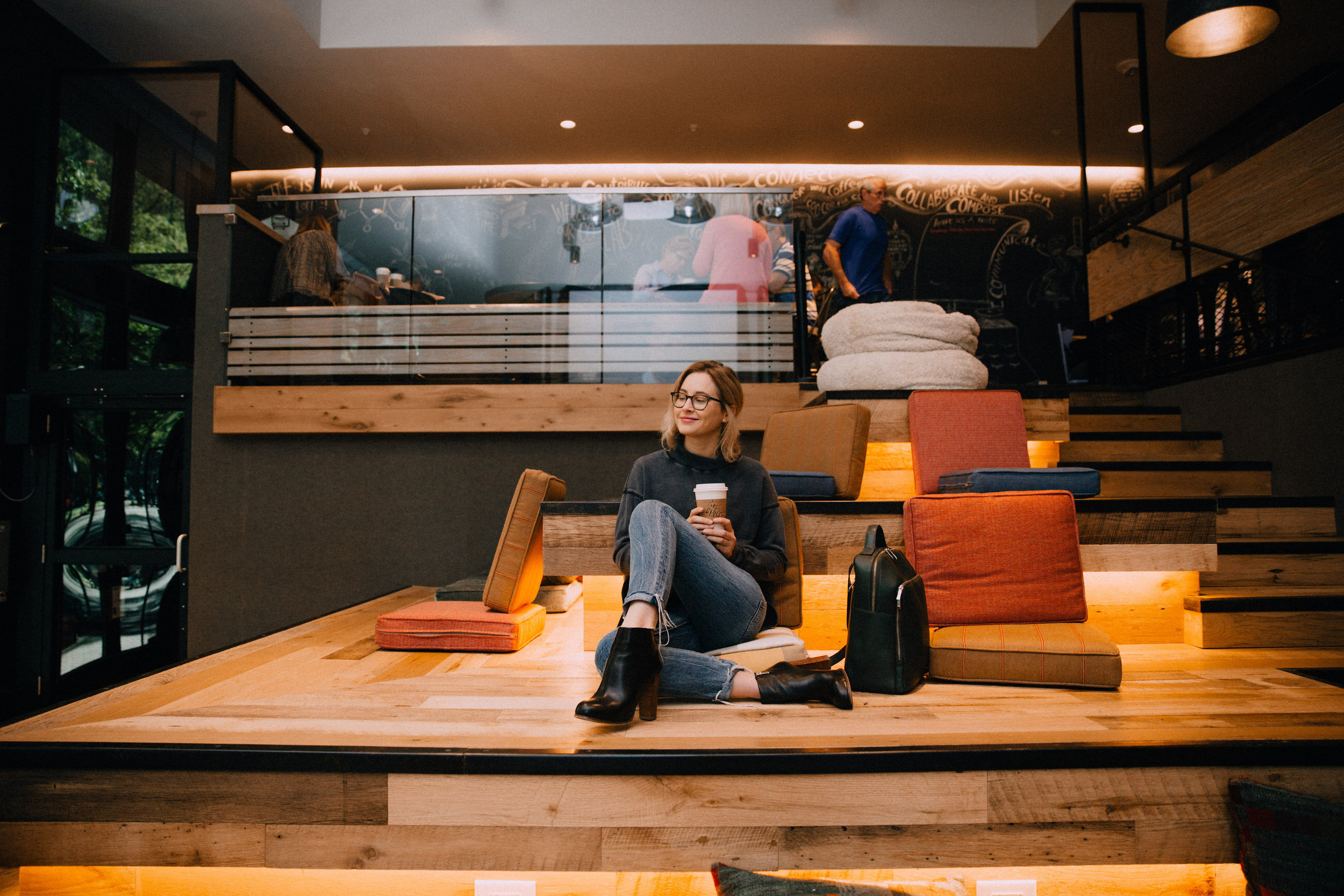




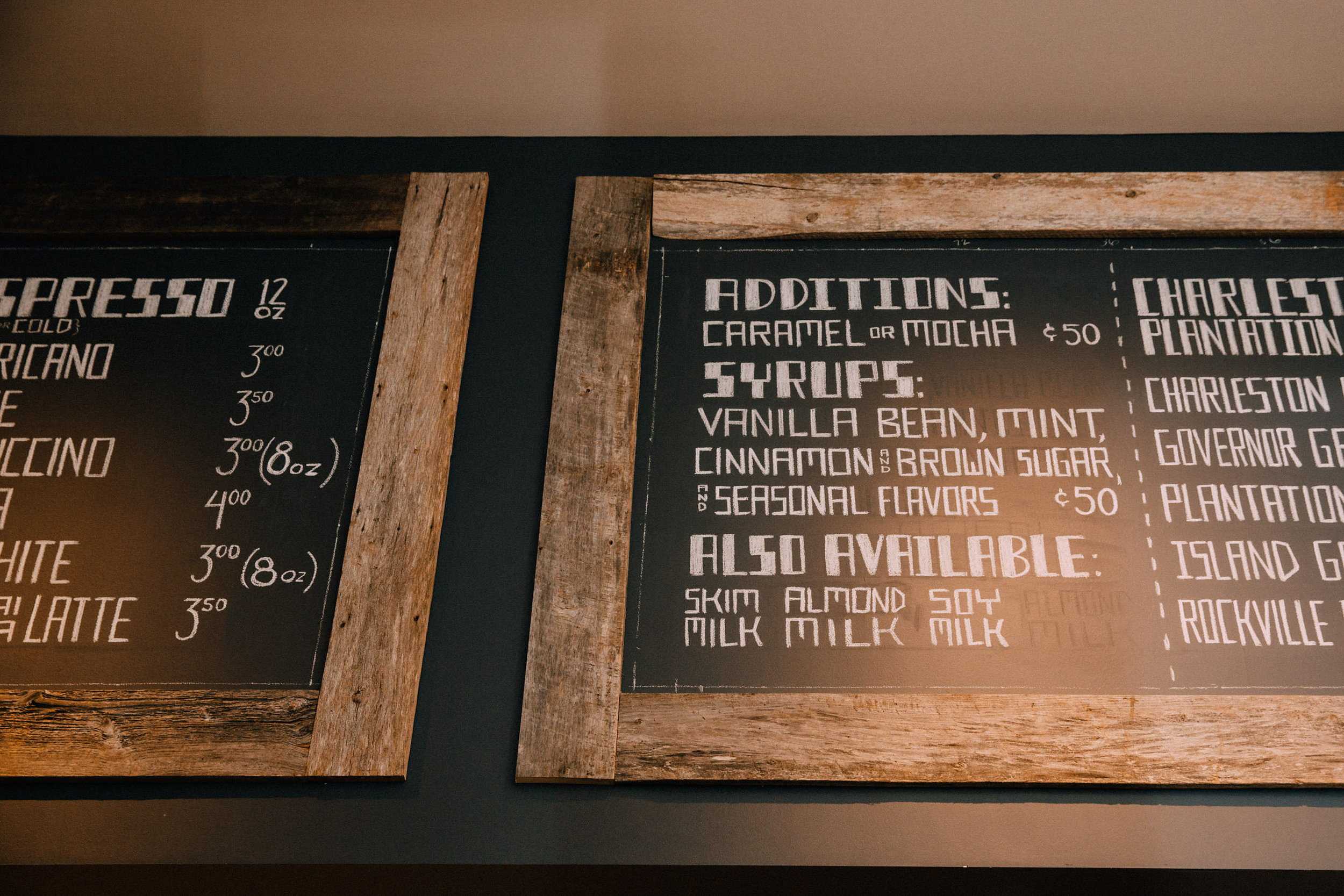



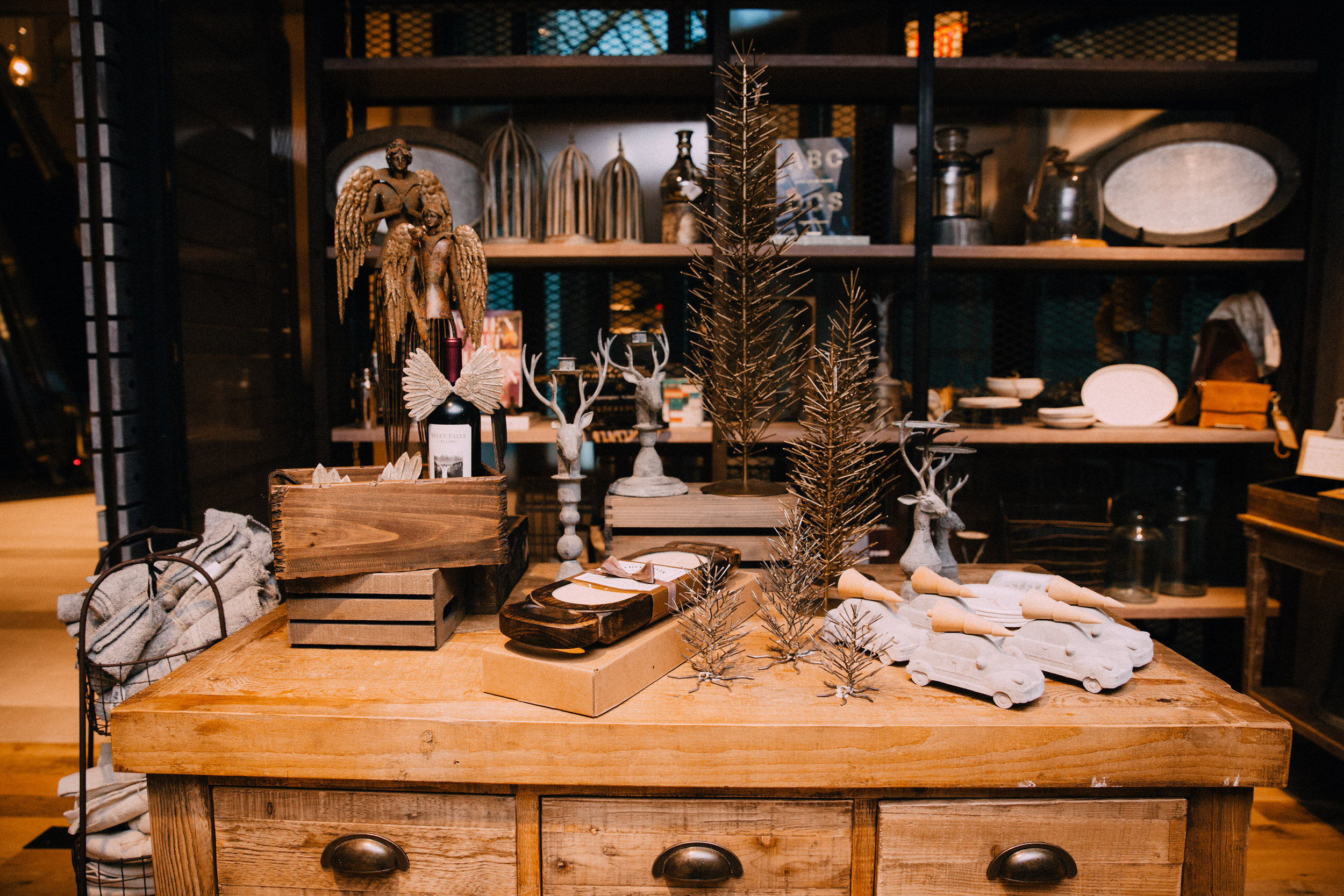
photo credit: Taylor Heery Photography
What more do you need from a trip than amazing coffee and a perfect spot to lay your head? Something to fuel you as you traverse a new city? And a pillow to catch you at the end of a well spent day?
That's just what Coco & the Director (above) provides-- the coffee part, at least. It's a locally sourced coffee shop right inside the lobby of the Charlotte Marriott City Center, which recently celebrated its grand opening. And we got our fill of expertly roasted beans, the most tech-savvy lobby we've ever seen, and boss women in the Queen City when we headed to Charlotte last month.
Like our past City Guide's, we met and profiled women who are at different points in their careers, each with a different focus and personal definition of success and balance. Women who have made the decision to strike out on their own-- and haven't looked back yet. Queens in the Queen City, if you will.
LAUREN HOOKER, FOUNDER ELLE & COMPANY
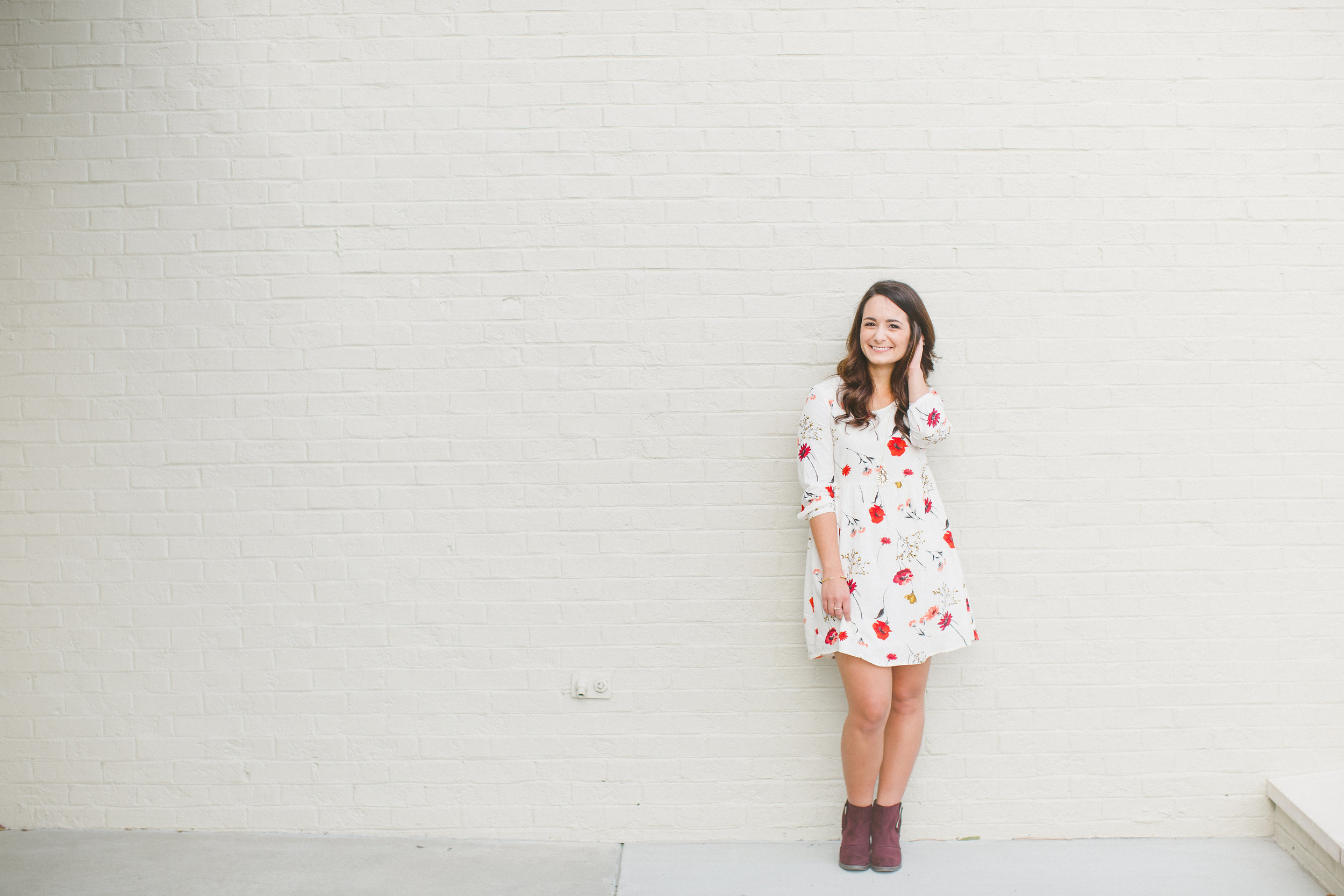





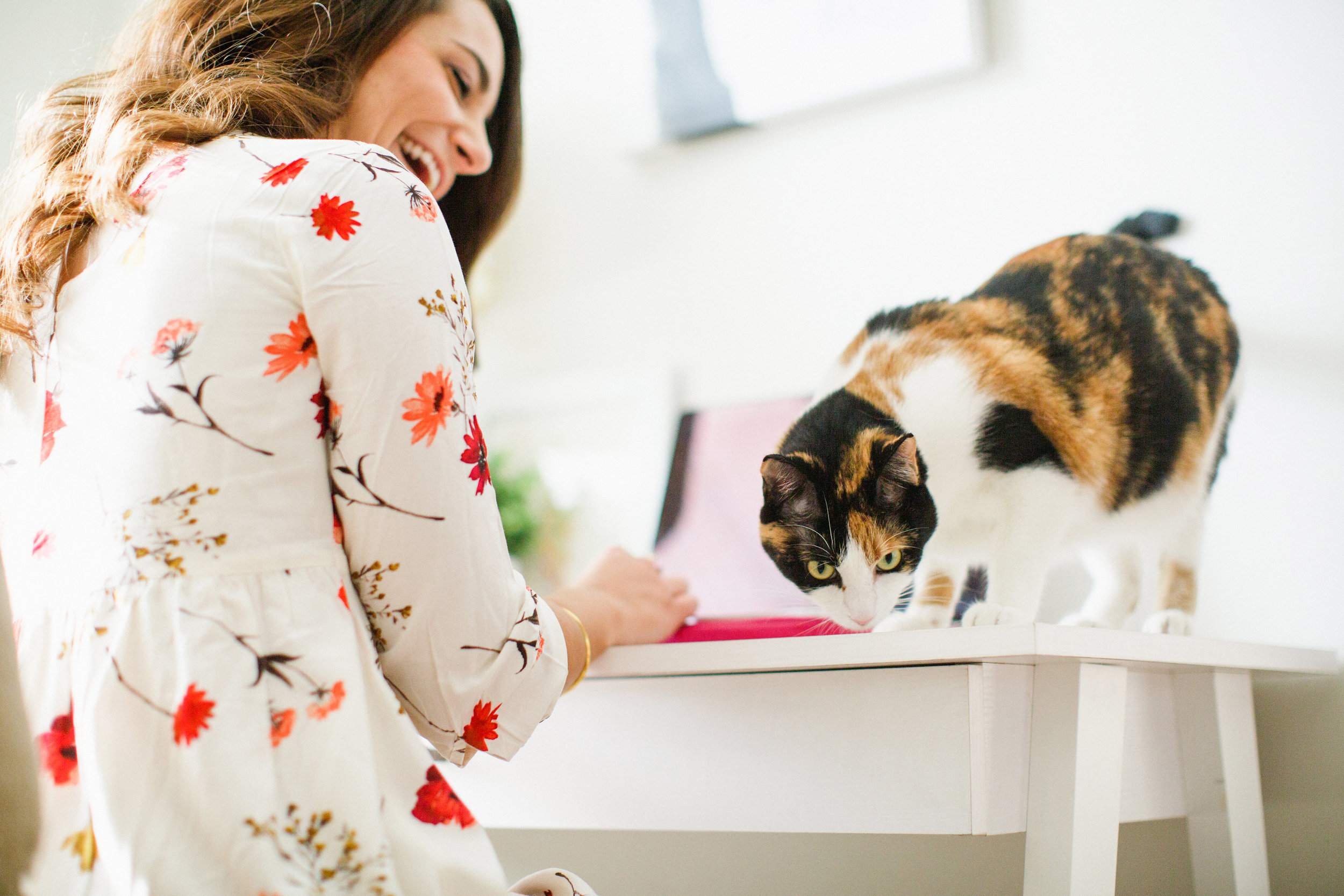
photo credit: Julia Fay Photography
Lauren Hooker started her design business Elle & Company in 2014, after reneging on a childhood pact she made with herself to "never, ever own a business."
"My dad owned a gym in our small hometown when I was growing up, and after seeing all the stress and time he poured into that venture." She says she swore up and down that she wouldn't follow suit. Instead, she pursued her life-long passion for design, nabbing a BFA in Visual Communication Design from Virginia Tech. From there she landed a design position at a startup. But her boss, a 45-minute commute, and lack of creative freedom left her feeling lackluster about her position. "So," she says, "I did what any creative who hates their day job would do; I started freelancing."
It was during this time she felt the freedom that comes with owning your own business.
Since then, Elle & Company has grown from a design studio to a business resource for creative entrepreneurs. "I love what I do," says Lauren. She's also the current household #breadwinner while her husband Jake, is back in school.
Lauren says, "I'm happy to be the 'breadwinner' of our family during this season. I know Jake would do the same for me if I ever chose to go back to school.
More crazy than being the sole provider these past 3 years is that my business has not only been supporting us, but it's allowed us to pay for his schooling and save for our future. It's been a huge blessing."
Even though she's found herself in this role, Lauren says she never imagined she'd be an entrepreneur. "I'm a workhorse, but I've never considered myself a visionary.
Over these last three years I've come to learn that there's two kinds of entrepreneurs: those who were born entrepreneurs and are always looking for the next business idea, and those who were born creative and want to start a business to carry out their ideas on their own terms. Jake is a natural-born entrepreneur; I'm a natural-born creative. We make a good team."
"I'm a workhorse, but I've never considered myself a visionary."
Tweet this.
This past year she's been able to bring on two part-time assistants, increase her prices, and focus on some passive income streams. And Charlotte is the perfect place for Lauren as she continues to grow. "I'm a southern, East coast girl, through and through. Charlotte is a good mix of southern charm and city life. It's clean, it's growing, and it's close to both the mountains and the water. We love it here."
She's sharing her favorite spots in the city below.
Best spot in Charlotte to hear live music: Neighborhood Theatre
Grab a morning cup of coffee: Not Just Coffee
Grab an afternoon cup of coffee: Amelie's Bakery (see above images)
Tourist spot in Charlotte that’s a guilty pleasure: Romare Bearden Park
Tourist spot that you’ve never visited: U.S. National Whitewater Center
Your favorite spot in Charlotte to sit and be still: Freedom Park
Favorite date night spot: Napa on Providence
MARSHA BARNES, FOUNDER THE FINANCE BAR
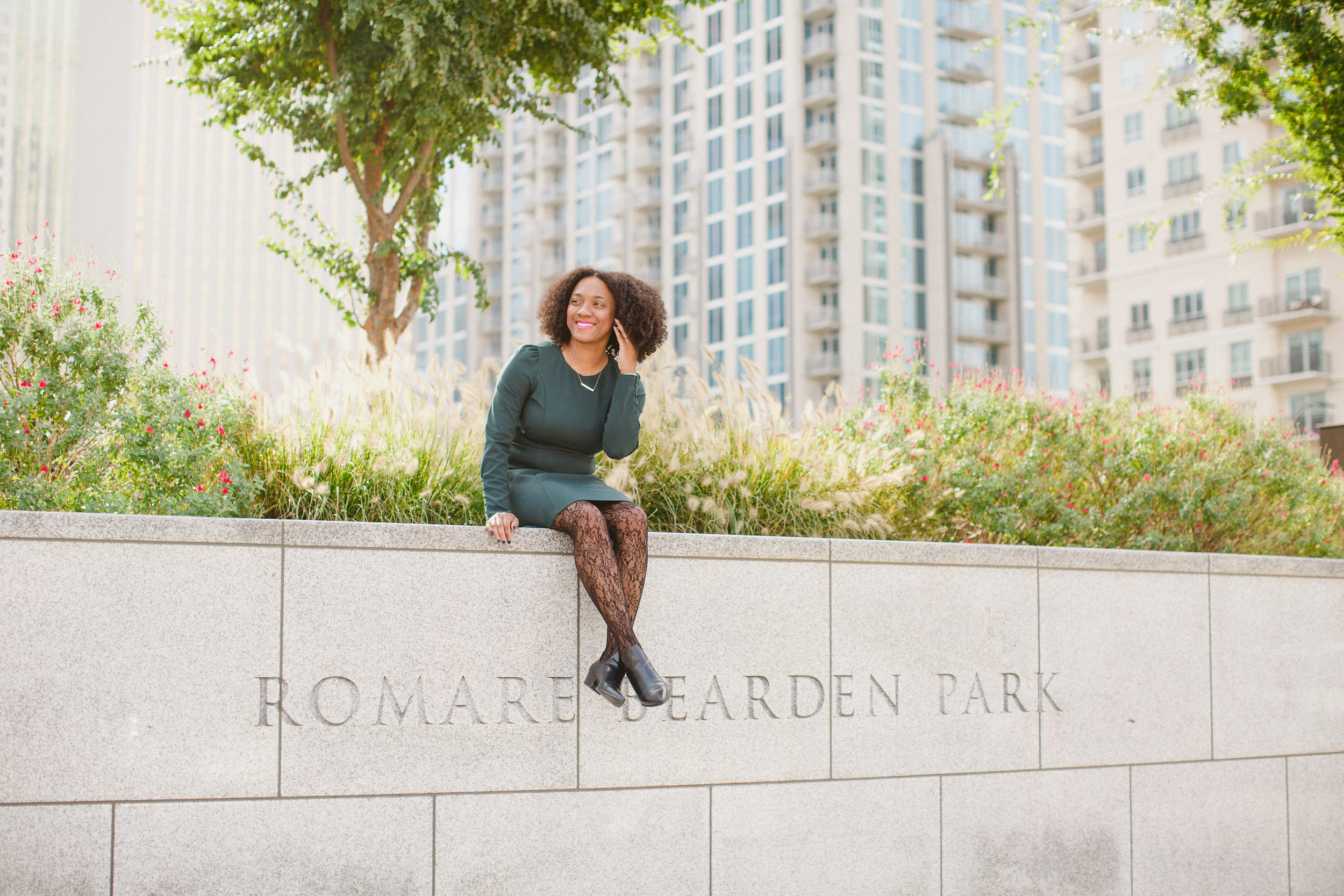

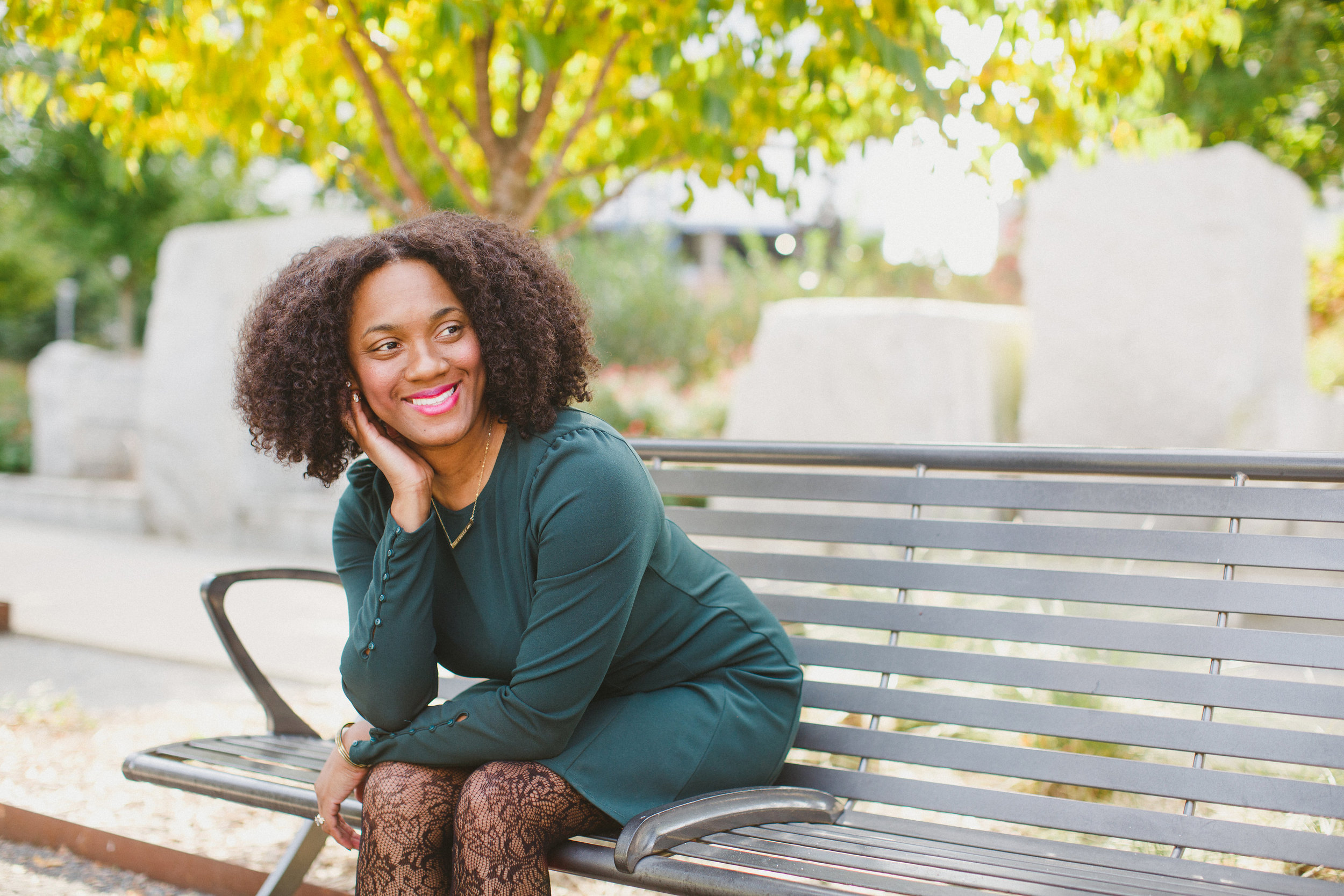

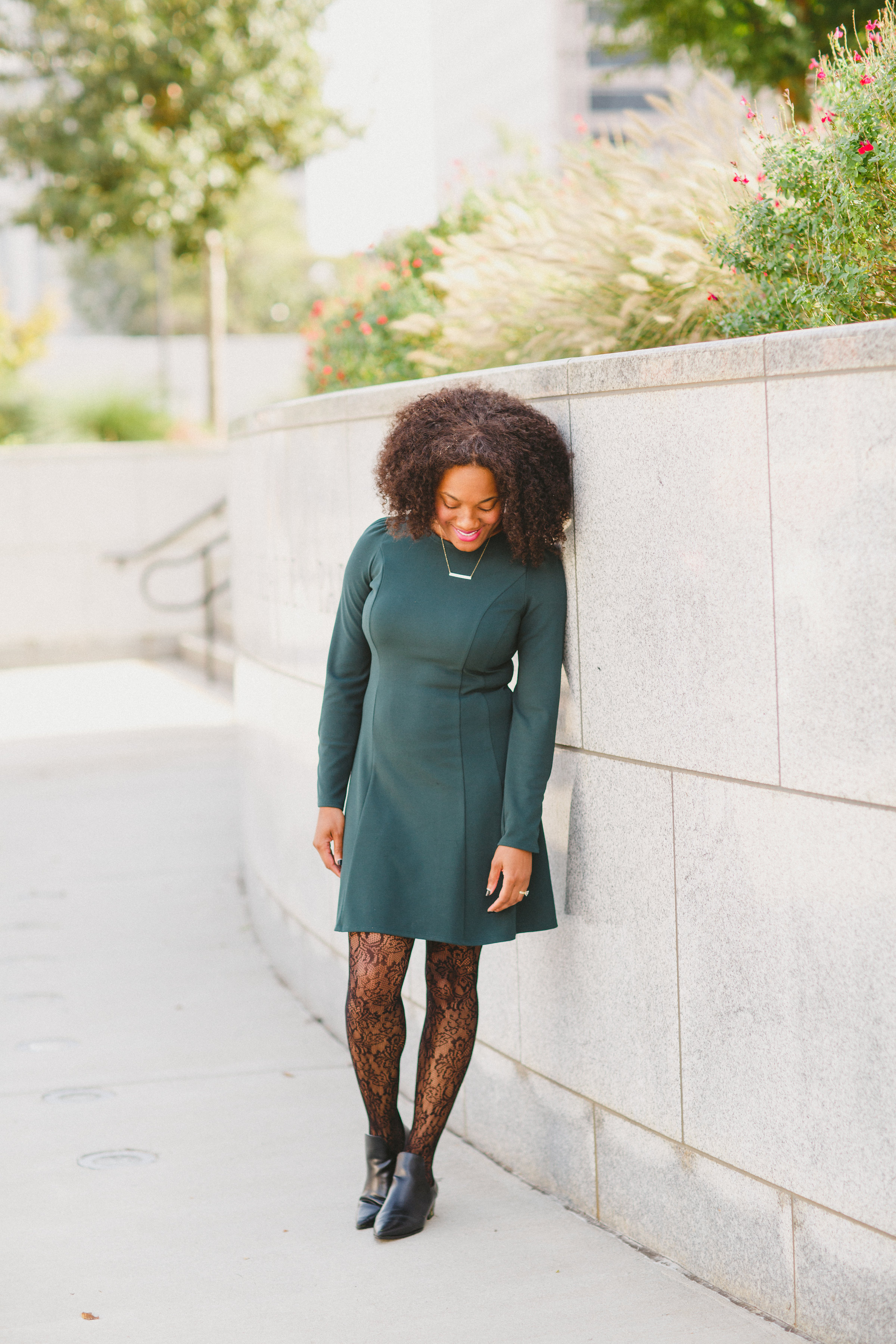

photo credit: Julia Fay Photography
Marsha Barnes started her career in the banking world, a place that provided her great opportunities, but the finance guru says that her true calling is much different than a banking setting. "There is a huge gap and percentage of people who are under-served on their financial journey," Marsha says.
"The world of personal finance is very similar to gaining levels of education, you begin with the basics and navigate your way up depending on your situation. I wanted to close that gap."
So she created The Finance Bar, a mobile finance station designed to service everyone stressed about their financial standing. The idea came about specifically to "not exclude anyone," says Marsha. "It allows me to travel to organizations, corporations and educational institutions and connect with people in a non-traditional financy type of way."
She also recently launched her Coaching Suite, what she calls a much more intimate experience than the mobile unit. At the suit she's offering 1:1 support for singles, couples and entire families that need guidance.
Marsha wasn't always so money savvy. "As a young lady I wanted all the things that I knew my money could buy. When I received my first promotion in the corporate world the first thing I wanted was a BMW and I didn't earn BMW type of money back then. I wanted my title at work to match my lifestyle. Totally the wrong thinking process. Terrible actually."
"I wanted my title at work to match my lifestyle. Totally the wrong thinking process."
Tweet this.
But she is keen on sharing her know-how and how-to, especially during the spendiest season of all. "During your down time stop and think about the life that you truly desire for yourself. Is it to vacation more, create your own business, spend more time with family?" she asks. "Believe it or not, money affects a lot of what we do in life. Be mindful of your dreams-the holidays will come and go but will your dreams?"
Here's a list of Marsha's favorite and financially smart places in Charlotte. (Why spend $$ when you can hit up a spot for free?)
Favorite spot to have a cup of morning coffee: Not coffee, but definitely hot-chocolate at the bookstore with my husband.
Best location to watch the sunset: On my porch.
Grab a post work drink with a friend: Jade Asian Fusion
The one place in the city where you’ll splurge: Books-A-Million
Where you can get the most bang for your buck: The library. It's full of free learning.
Favorite spot to sit and be still: The library and my porch.
Awesome neighborhoods you got to explore while taking the mobile hub on the road: Any neighborhood in my community. You never know what people are experiencing unless you are willing to meet them "where" they are.
HOLLY HOLLINGSWORTH PHILLIPS, CO-OWNER THE ENGLISH ROOM
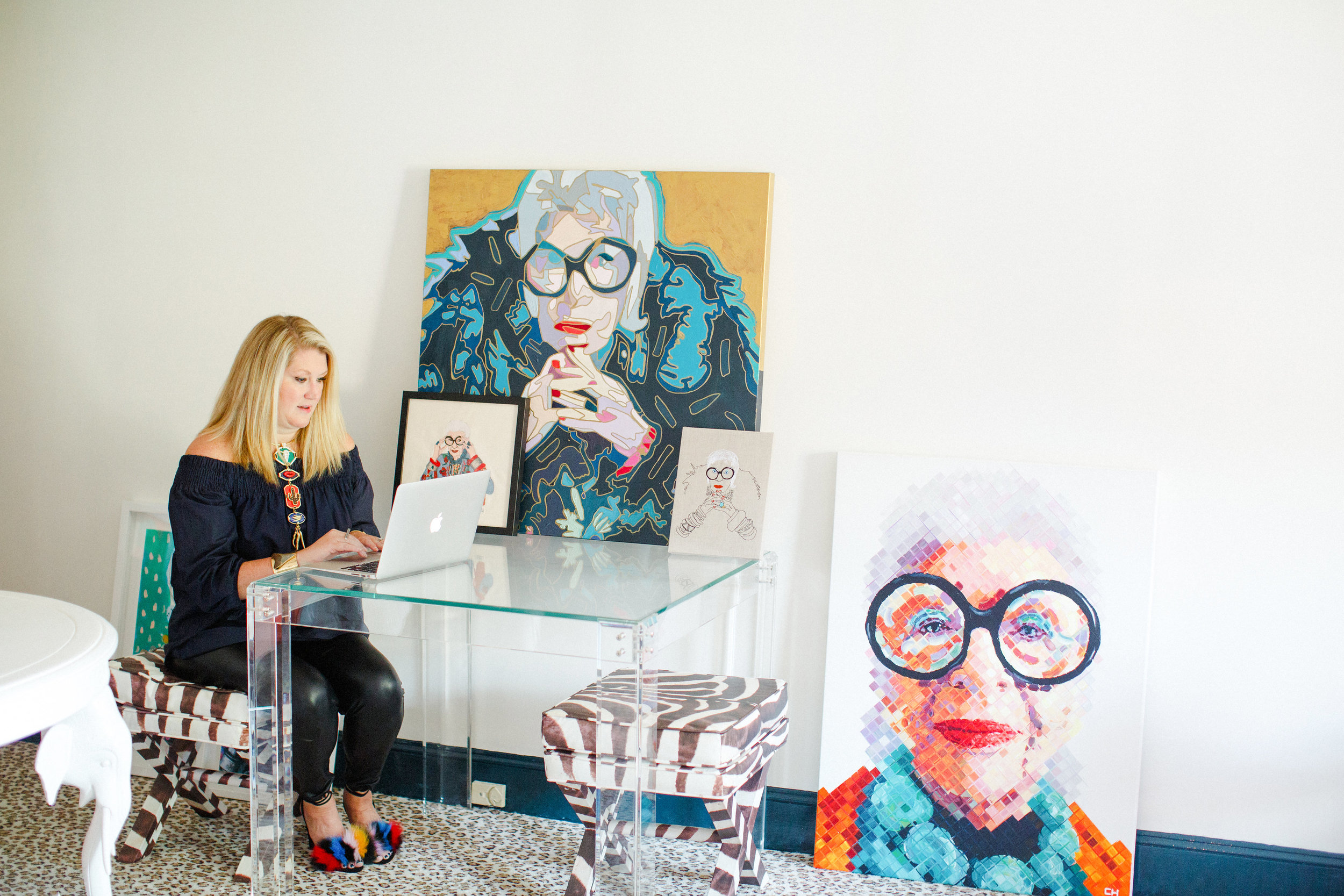



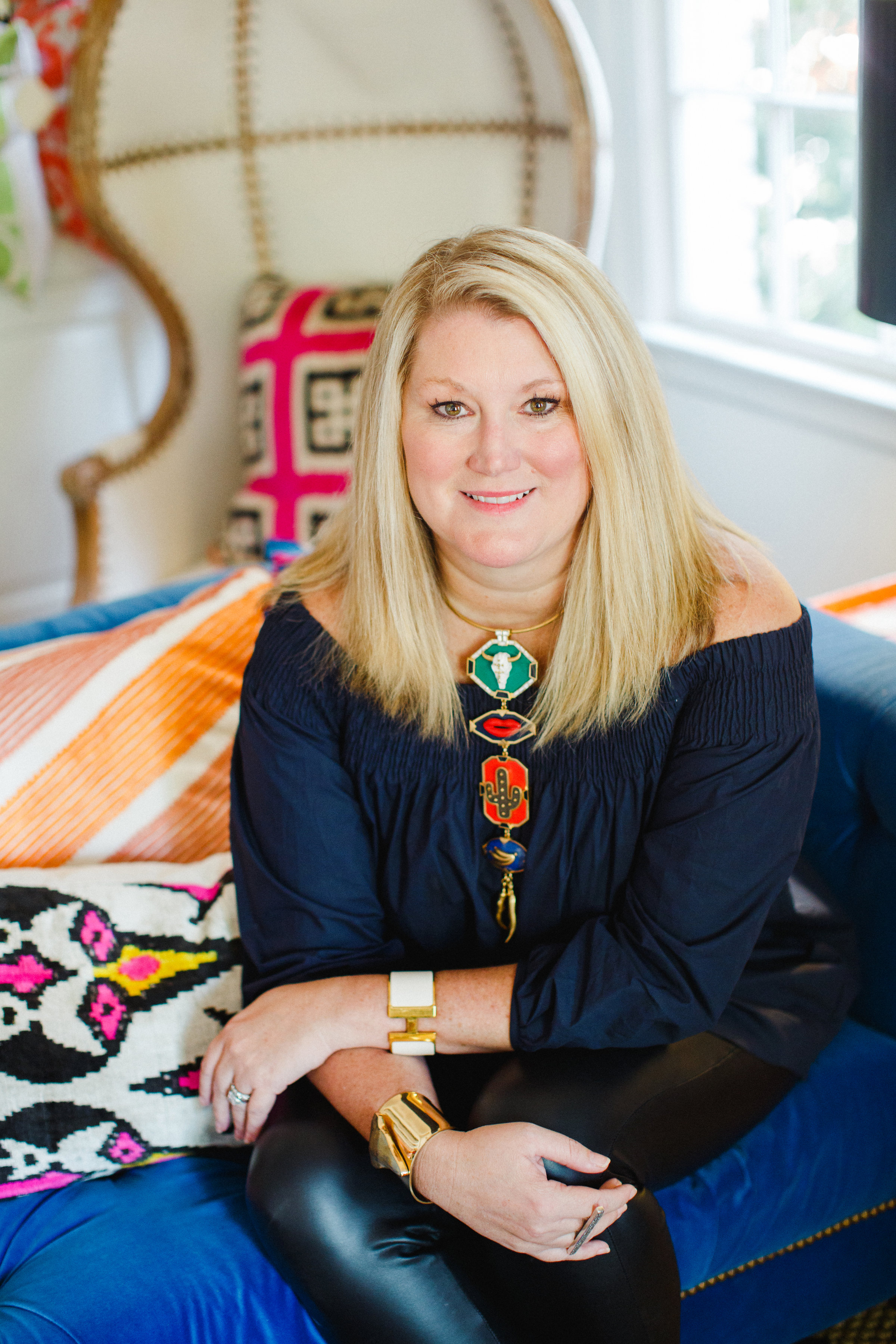

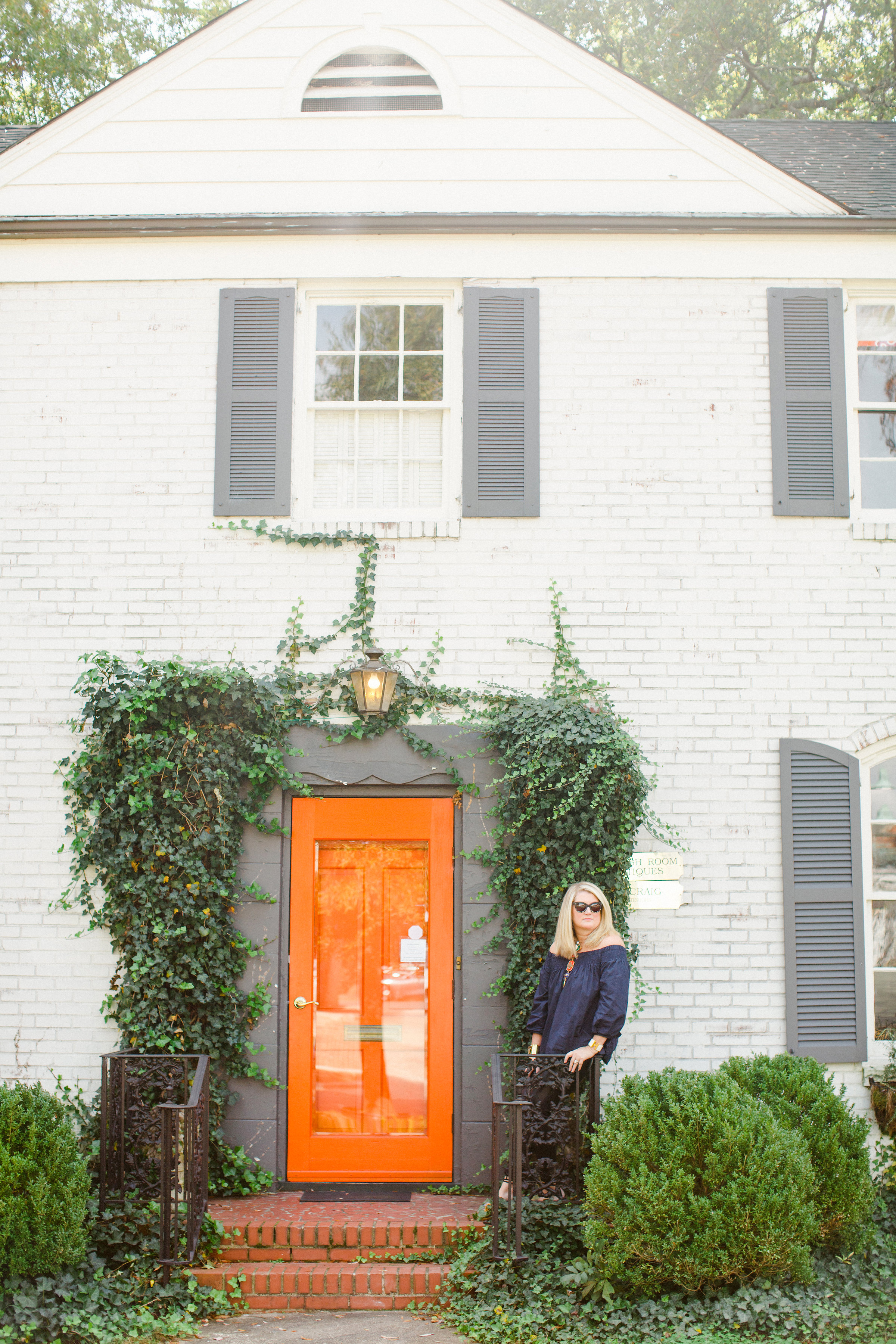


photo credit: Julia Fay Photography
"I often want to scoop it all up. I am a true shopaholic and I am thrilled to have the job that pays me for it," explains Holly Hollingsworth Phillips, co-owner of The English Room, an interior design business originally run by Holly and her mother, Nancy Hollingsworth.
"My mother does not accept the word 'NO,'" says Holly. "She is persistent to a fault sometimes. That has served me well to get things done and maneuver difficult situations."
It's something Holly's been actively doing for over 20 years. Immersed in the world of design at a young age, Holly went on her first buying trip to Europe at 12.
She also learned to be "kind to everyone you meet. The subs and people who do lots of the actual install make this business happen," explains Holly. "Those relationships should be cherished and well-respected."
They are relationships that she's built over the last 20 years, but don't think that makes her unadaptable. "Access online has broadened knowledge and sources for everyone-- clients and designers alike," she shares. "I have a love/hate relationship with Pinterest because the client can peruse ideas for days and get so confused. Yet, it has become an integral tool for me with secret boards for each project. It is a way for clients and I to share ideas easily."
Iris Apfel is another huge influence on the designer. A woman who Holly says is a true design icon. She has been, "an interior designer, a textile designer, a business owner, a shopaholic and she has now become a fashion icon. I respect her desire to not be swayed by trends bit to dress for herself," Holly says. "I have always abided by her 'more is more and less is a bore' philosophy."
"I have always abided by her 'more is more and less is a bore' philosophy."
Tweet this.
Things have also changed a bit since she was 12 browsing antiques in faraway places, but the travel component of her work has not. To get into travel mode Holly says, "I research like nobodies business! I cull my design friends for their knowledge of the location. I research travel guides for each location ad nauseam to find all the best spots prior to a trip. I make a Pinterest board. I map everything on Google maps and make a very set itinerary." And yet she's remains open spontaneity. "Plan and over plan so you can go with the flow and relax knowing you didn't miss a thing."
Don't miss anything on Holly's list of her favorite spots in Charlotte below.
Best spot in Charlotte to be inspired: The Mint Museum
Grab a morning cup of coffee: At home, my husbands coffee is the best. Love Amelie’s in Noda or Little Spoon for a weekend treat.
Grab an afternoon cup of coffee: Starbucks because it is 100 yards from my office. I wish Coffee Bean & Tea Leaf was in Charlotte.
Tourist spot that’s a guilty pleasure: Pinky’s Westside Grill - Get the Pimpin’ Fries smothered in pimento cheese…worth the heart attack.
Tourist spot that you’ve never visited: Nascar Hall of Fame
Best under the radar shopping spot: Hidell Brooks Gallery for incredible art, Sleepy Poet for an occasional random design score.
Find amazing vintage: Slate Interiors
Your favorite spot in Charlotte to sit and be still: Foxcroft Wine Company with great bottle of Cali Chard and cheese plate.
A restaurant that has amazing food: Kindred in Davidson is by far the best restaurant in the area!
A restaurant that has amazing interior decor: Kindred or Reid’s for chic french bistro style…or Halcyon at The Mint Museum. (This is not Charlotte’s forte…I would love to design one chic interior.)
Be sure to check back on our final stop of the year with Marriott Hotels. Up next: we are heading to Seattle, WA.
MORE FROM OUR BLOG
These Companies Have Achieved Gender Equality at Board Level
Get on board, or get left behind.
photo credit: Tommy Ton
The UN describes parity as between 40% and 60% of each gender in the workforce. And some companies, like Tupperware are leading the charge with 59% female workers.
But the role of women in senior leadership positions (defined as the top 6% of a company) is not nearly as high. In fact recent reports released by Catalyst have shown that despite a call for equality in top-tier positions, men held 80.1 percent of S&P 500 board seats, while women only held 19.9 percent. "Although some US companies are prioritizing board diversity, building it into the fabric of their key talent decision-making, they still have a long way to go before women's representation on their boards and throughout their executive ranks is near parity with men," the report said.
The way things are going, some predict it may be 80 plus years before we achieve equality at all levels of the workplace. But these companies aren't waiting around. They have made the push for equality now.
1. GENERAL MOTORS
GM made news when they hired Mary Barra as their first female CEO in 2014. Barra started 36 years ago as a co-op student at GM and became chief executive in January 2014. But they didn't stop there.
They have also been slowly and quietly working toward board parity. The automaker made quiet, though significant waves in June of this year when the shareholders elected Jane Mendillo, the chief executive officer of the company that manages Harvard University’s endowment, to its board of directors. Notably, they did not release any press release about the achievement, letting it stand on its own. The 12-member board is now evenly between men and women.
GM isn’t the first company to have an equally split board, but it's one of the biggest names to do so.
2. TUPPERWARE BRANDS
There's a reason Tupperware has landed on Forbes' most admired companies list eight years in a row. Chairman & CEO, Rick Goings, has been dedicated to promoting gender equality in business since joining the brand almost 20 years ago and has been urging other companies to do the same.
"Say it ain't so: it may be 80+ years before we achieve equality at all levels of the workplace."
Tweet this.
In 2015 the company signed on as one of the first companies participating in HeForShe, the UN Women’s program in support of gender parity. Tupperware made a three-year, $500,000 commitment to the program.
In January of this year Tupperware added Meg Crofton to the company’s board of directors, joining 12 other board members, including Goings. Five out the 12 seats are currently held by women.
3. MICHAEL KORS HOLDINGS LTD.
There may be more lauded male designers than women, but this is still fashion you can feel good about. The parent company of Michael Kors has 50% parity on its board of directors. Of the eight seats four are occupied by women.
4. SELECT COMFORT
Leave it to a sleep solutions company to help up rest a little easier that board parity can be a reality. Achieved in March of this year, Select Comfort added two new female board members.
Barbara R. Matas and Vicki A. OMeara now serve the board, effective as of April 25th, making for an even 50/50 split between male and female members.
5. VOYA FINANCIAL
Four out of 10 seats on Voya's board are occupied by women. According to the Wall Street Journal, "Voya Financial informally took this approach after the provider of retirement, life insurance and investment services went public in spring 2013 with a nine-man board. CEO Rodney O. Martin Jr. and another director soon interviewed male and female prospects."
Of the five open board seats, women took four of the. Mr. Martin told WSJ that he hopes the split will be 50/50 soon. "Our board should look a lot like our customer base,” he explained. “More women than men control family financial decisions.’’
6. GOLD STANDARD
Two S&P 500 companies, student loan company Navient and utility company American Water Works Company, have more women than men on their boards. Navient added five female directors in 2014 and now has six women on its 11-member board.
HONORABLE MENTION: BEST BUY
Men might be known to gather around the TV for game days *congrats Cubs* but women fill up the majority of leadership positions at Best Buy. The Richfield-based company, and nation's largest electronics retailer reached a turning point April, 2016 when Trish Walker was hired to become president of services (which, includes the Geek Squad). Walker's hiring made for 6 out of 10 executives who report to Hubert Joly.
Best Buy's board is not far behind. It is a focus and priority for the company, which added two new female board members this year. Currently four of the 11 seats are held by women.
MORE FROM OUR BLOG
Rashida Jones Launches New Jewelry Collection with Iconery
Don't call it a collab.
Making a statement. You can do it with words and you can do it with jewelry. Rashida Jones, whose new jewelry collection was unveiled today, has now done both. The actress and activist partnered with Iconery, the online destination for jewelry fanatics, to design a collection that drew on personal memories, using, for instance, her father's pinky ring as the model for her Square Ring.
“I wanted a return to Seventies, Eighties bold, iconic symbols and what better way to do it than make it yourself?” Jones explained to WWD.
Which is exactly what Iconery allows. It's also why founder and CEO Ivka Adam makes it clear that this is Jones' collection, not a collaboration. "We 'power' fine jewelry collections," Adam says. "In other words, we facilitate the design, manufacturing and distribution of collections on behalf of celebrities, influencers, and brands. They come to us to make their design vision a reality, and building their own brand is more important than ours."
Adam launched Iconery last year on the premise of producing fine jewelry on-demand using 3D printers. Early on she made the decision to "power other brands rather than build our own. From my background at eBay, where I worked with collectibles sellers around the world, I fell in love with supporting other people’s passions."
Still, the partnership between the brand and celebrity have to align. Andrea Linett, founding Creative Director of Lucky mag and, now Iconery's Creative Director, explains why Jones was the perfect choice for the company's first celebrity line. "The people we choose really have a point of view, which is what Iconery is all about," says Linett. "We bring an authenticity to the collections when they’re designed by influencers and 'cool girls' — they know what they want and they actually get to make it and share it with everyone."
Adam echoed this thought. "First and foremost, she [Rashida] embodies 'the Iconery girl:' she’s cool, kind, independent, and informed. While we’re still a young company we have to be very deliberate in how we build our brand and where we spend our resources. We want to bring collections to life for people we admire and adore working with, who also help communicate our values to the world."
"We want to bring collections to life for people we admire and adore working with."
Tweet this.
"Second," Adam says, "[Andrea] already had a relationship with Rashida so the trust was immediately there. It made the business side of the process much easier and efficient, and Andrea 'got' Rashida’s vision for the collection."
Adam maintains that now is the right time for a celeb collection for a few reasons. "In our first year of being live," she explains, "we’ve already launched collections for several influencers and fashion designers. We started by working with those with whom we had a relationship. They had to fit into our brand ethos, but it was important to start with friends so we could get real, honest feedback to improve our process."
Now they will be tracking how various influencers, celebrities, and brands convert differently. "My hypothesis is that people who have smaller, more engaged followings convert better," Adam says, "but the big names build brand awareness and trust. We deliberately waited to launch a celebrity until we really felt like we had everything in order."
In order and ready for order. The Rashida Jones Collection which includes a mix of statement rings, earrings, bracelets and necklaces, launched today! There’s a Mariner chain necklace, square hoop earrings, a chunky square ring with an offset black diamond, and other pieces that use symbols like the ankh and hamsa. Of the collection, Jones says, "I like the idea that we wear jewelry to unite us and protect us in core beliefs. We need that right now."
And you need a piece from this collection.
MORE FROM OUR BLOG
Brushing Up: You're Waiting Too Long to Swap Your Toothbrush
And what this new company is doing about it.
Claire Burke wants you to brush better. Which is why she and Goby, co-founder Ben Goldberg, are sinking their teeth into the business of oral hygiene. It may not sound like the sexiest venture, but it's one full of possibility. Last week Goby launched their first product, the first-ever direct-to-consumer rechargeable electric toothbrush combining unprecedented value and convenience. The toothbrush is available for $50 with a subscription and replacement heads start at just $4. The charging station has no cords and is designed to minimize post-brushing build-up. Sound like a dream clean?
We caught up with the entrepreneur to talk why teeth and how Goby is changing the game.
Can you tell us a little about your background? How did you end up as the co-founder of Goby?
I graduated from NYU’s Stern School of Business before working at investment bank Lincoln International for six years. Simultaneously, I pursued my personal passion for film and media by co-founding a production company. In 2013, I left investment banking to pursue an MBA at Columbia Business School. While at Columbia, I immersed myself in media and technology, working for The Raine Group, Hearst, theSkimm, and Female Founders Fund, each of which expanded my interest in startups and exposed me to the value and power of brand. I met Ben through a mutual friend from business school and was immediately drawn to the Goby mission. Deemed “Cavity Claire” by my family growing up, I was inspired by my own struggles with good oral care and was determined to enhance consumers’ oral care experience by creating a value-driven oral care product with a relatable brand personality.
With Goby you’re hitting a few of major markets and key trends— direct-to-consumer, health and beauty, and the membership business model. We’ve seen many businesses go this route. Why was now the right time for teeth?
We saw a significant opportunity to disrupt oral care because oral health is an overlooked space in health and beauty. Oral health is important! Many diseases have oral manifestations, oral issues are the leading cause of missed school and work days and 50% of people aged 30 and older have some form of gum disease. Leveraging the direct-to-consumer / membership business model was a natural starting point for us to enhance the brushing experience for consumers across the country. The average consumer changes their toothbrush every nine months as opposed to the dentist-recommended three months, so we offer a subscription to ensure that our customers can keep both their mouths and brushes clean without having to worry about running to the drug store.
"The average consumer changes their toothbrush every nine months as opposed to the dentist-recommended three months."
Tweet this.
What went into research and development? How long did it take from concept to product?
We tested all the various models on the market to determine which features were necessary and which were superfluous. We assessed dozens of other products, surveyed friends, family and colleagues and ultimately designed a product that fits seamlessly into the modern consumer’s lifestyle. From concept to product, it took about two years.
Why was the design element so important?
Design was important because it folds into so many aspects of the value proposition -- creating something intuitive and user-friendly that breaks through the currently overcrowded and over complicated market, ultimately providing the consumer with the best possible brushing experience at a fraction of the price of the competition.
How do you get people to look at something that they’ve used their entire life and think about the possibility of doing it differently?
It wasn’t as much about rethinking, but rather maximizing the consumer’s time and taking the onus off of the consumer -- having them think less about brushing and replacing, while simultaneously improving the quality of their brush and ultimately the state of their oral health.
Was it a hard sell?
We had been working on Goby for nearly two years, bootstrapping the vast majority of the way. The funding process was definitely not easy, but fortunately, our investors appreciated the problem we were trying to solve because they experienced the same problem firsthand -- frustration with today’s current oral care products. For both Goby and our investors, we experienced a pain point, and felt there must be a better way.
You have an investor specifically geared toward early stage tech products that transform consumer experiences for the better. How did you approach those meetings?
First, we tried to clearly articulate the problem. What we found with the investors that ultimately invested was they personally experienced the problem, too, and saw value in our solution. Second, it helped that the market opportunity is significant. Everyone brushes their teeth, but most people don’t do it well. Electric toothbrushes provide value, yet less than 15% of people in the U.S. use them. Goby’s improved experience has a measurable impact on consumers’ oral health.
From your perspective, what goes into building a strong brand?
Developing a brand personality that the consumer can connect with, while simplifying and maximizing the consumer’s experience with the product.
Why do you think there hasn’t been much innovation— aside from bristles and grip— in the toothbrush space?
In the electric toothbrush space in particular, there hasn’t been much innovation because the market is dominated by two large companies and is thus zero-sum. For the incumbents, there’s no need to innovate from a business model, messaging or experience perspective, but consumers are consistently expecting more from the brands with which they affiliate. Goby aims to resonate with those who are looking for an easier, relatable and more affordable oral care experience.
What do you hope to achieve with Goby?
We want to improve oral care by providing a brush that is affordable, intuitive and relatable -- overall, we want to enhance the oral care experience.
Cavity Claire, your nickname as a kid. If you had to blame one food, what was your go-to indulgence as a kid? And now?
I always had and always will have a sweet-tooth. I can’t blame my cavities on one specific food item, but in general, sugar was the culprit.
MORE FROM OUR BLOG
It Must Be in the H20+: How This Beauty Company Is Building a Strong Future for Girls
A good foundation matters.
2016 marked the kickoff off year of H2O+ Beauty’s Making Waves Initiative.
The international beauty company that believes that water and hydration are the foundation of true beauty and great skin, made it their goal to directly support organizations whose social missions align with their own.
They partnered with Girls Inc. of Alameda County, a non-profit organization on a mission to inspire all girls to be strong, smart, and bold. It was a natural pairing.
H2O+ knows that strong, empowered girls bolstered by encouragement from their community make for even stronger, empowered women. Beauty comes from within, so does the courage to believe in yourself. But none of us do it alone.
"Beauty comes from within, so does the courage to believe in yourself."
Tweet this.
In 2013, Girls Inc. opened its new headquarters in Alameda County, becoming the first and only resource center for girls in the area. They provide year-round academic achievement and skills-building programs to underserved girls as well as counseling services to over 8,000 girls and families.
When Cindy Melk founded H2O+ Beauty in 1989 she had the goal to put beauty back into the hands of the consumer. She was only 27 years old when she had the idea, but coming from an entrepreneurial background, she had the support of her father, John Melk, the name behind successful ventures like Blockbuster, and her mother, the founder of a successful spa in Chicago. She pitched her father on her business plan, proved her plan viable, and received a small amount of seed funding to get the company up and running for about 6 months. While the rest was up to her, she had the foundation and the support from her family, something that H2O+ recognizes as crucial to success and a bright future.
H2O+ believes that, “progress is forged when communities support, challenge, and inspire women. In our work, we are inspired by the courage of our own founder in her quest to define beauty on her own terms.”
They fulfilled the 2016 mission by sharing the proceeds of their best-selling Oasis Hydrating Treatment with a $10,000 donation to Girls Inc of Alameda County. Moreover, H2O+ Beauty employees supported girls in their local community by volunteering more than 40 hours of their time in workshops and mentoring sessions at the Girls Inc. of Alameda County Simpson Center for Girls.
H2O+ plans to build on the success of their partnership with Girls Inc. with an even bigger and more impactful contribution of time and resources in 2017. We also got wind of a very special event that they’re hosting with Girls Inc. this fall (details are still under wraps), but stay
To learn more about Girl Inc. of Alameda County, visit here. To learn more about H2O+ Beauty Social Mission visit here.
Filmmaker & Cancer Survivor Encourages Young Women to "Dream, Girl"
Komal Minhas knows dreams are meant to be lived.
Erin Bagwell (L) and Komal Minhas (R)
It was a Kickstarter trailer that lead to a cold email that lead to a life-changing partnership. “It was an instinctual ‘I have to be a part of this,’ there was no doubt in my mind,” says Komal Minhas. “I knew I had to give it my all, and what that meant for me was being totally authentic, totally honest with why the project impacted me so much and why it meant so much to me.”
“This,” is Dream, Girl. A documentary from creator Erin Bagwell that features the empowering stories of female-led companies and their founders. From fashion to tech to non-profit, it explores the challenges, successes, the conventions that still hold women back, and the dreams that pull them forward. It is framed by Bagwell’s and Minhas’ struggle to make the movie.
When Bagwell launched the project on Kickstarter, the two women were complete strangers.
Minhas was in Italy on what was supposed to be vacation. Like thousands of others she saw the trailer one night before dinner and told her partner, Mitch, “I have to be a part of this, I have to figure this out.”
“I knew I had to give it my all, and what that meant for me was being totally authentic, totally honest."
Tweet this.
Initially launched with a goal of $57,000, Bagwell was seven days and $18,000 away from reaching her target, when the project received a boost from author and life coach Marie Forleo. Forleo agreed to blast the Dream, Girl mission to her email list of about 300,000 people. Money started pouring in and so did the emails. One of which was from Minhas.
“Erin went from having $30,000 to $104,000 in three days,” says Minhas. “The amount of press, the people-- when you’re cutting through the noise to get to someone who is that busy, who is getting cold attention, going from zero to hundred, I knew I had to stand out.”
Before she made any “hard ask,” Minhas thought about what she could offer. She had her own company, Montreal-based KoMedia, which she founded at 23. “I knew I could invest a little bit of the money I had saved up from the year of operating my company,” she says. Beyond that she could strategically supply “camera equipment-- I had a couple of 5D cameras and I had some audio equipment.” In her first email to Bagwell she outlined every provision she could make. Drafting what she called a “have-to reply.” Minhas says she “created an opportunity for Erin to respond, making the option of saying ‘no’ incredibly difficult.”
“I didn’t want to be overbearing,” she says. “I kept it light, but it was a rich ask and also, offer.” The response was not immediate. “It took Erin three days to reply after I sent a follow-up email. It felt like ages to me because I knew this was went I meant to do.”
Three nights later the two were on a Skype call. It was midnight in Naples, the connection kept cutting in and out, but where the internet failed, the synergy between the women succeeded. “We told each other our life stories, why we were each doing what we were, and I again reiterated the offer, the strengths I knew I had and what I could bring the partnership.” Bagwell, she says, “she was right there with me."
"Throwing it down, not being afraid to ask, but also, not being a crazy person,” that’s how she got in the door. “It’s a strange line to toe,” she says, but acknowledges, “I prefer more over less. Fortunately in this situation, Erin did too.”
From a Skype call, an in-person meeting, emails in between, and Minhas landed on set a couple of weeks later.
That first $104k gave the filmmakers enough funding to make it through about 8 months. “For the first time,” Minhas says, “I didn’t take a salary. It was almost a full year before I did because we were bootstrapping.” In the summer 2015, lead by investor Joanne Wilson, who appears in the film, they did a round of Angel funding. That raised another $100k. They did one final round of friends and family to “make it through the finish line.”
Though Minhas had never raised for business, she had done work raising money for charity. For instance, while at university she spearheaded a campus fundraiser that raised over half a million dollars for the Canadian Cancer Society. “I knew how to magnetize money for a cause,” she explains, “but when it’s a business you have to include how you’re going to share long-term revenue projections, understand distribution, and we had to convince our investors that beyond the social impact mission of the film we would bring them returns, and hopefully great returns.” It was a “learning curve when we were starting to pitch.”
And then there was the big curveball. “Back in March,” says Minhas, “I was actually diagnosed with cancer. I am survivor and was diagnosed cancer free a couple of weeks ago. But when we got the news March 2nd our premiere was set for May 26th at the White House. We figured it out and did our best.”
Erin Bagwell, third from left and Komal Minhas, fourth from left at the White House screening.
They premiered the film to a private, 190-person screening for women entrepreneurs, followed by a round table discussion led by Diana Doukas, the director of the White House Business Council.
The response was overwhelming and powerful. “It took two years to create the film and we’re anticipating it will take a full two to fully maximize the distribution. We’re not only creatives, but we made a film about business and we are running a successful business.” Since launching in June in New York, Dream, Girl has had over 100 screenings in seven different countries. They are planning to scale that number to over 1000 in the next year.
Another arm of the goal is to give young women “better examples of what wealth and what wealth in business looks like,” says Minhas. “We don’t want to be Wolf of Wall Street. That’s not our jam, but it’s a no-brainer that a woman can be in power.
"We don’t want to be Wolf of Wall Street. That’s not our jam, but it’s a no-brainer that a woman can be in power."
Tweet this.
Minhas and Bagwell are also turning the forty plus hours of unused footage into a web series called, Your Moment of Ambition, which they are looking to launch in 2017. The series will be 20 episodes at about 2 minutes each. "There are so many stories that couldn't make it into a film,” says Minhas. “Those of sexual harassment to a professor at Wharton talking about why it’s also a no-brainer that every man should be a feminist.”
They are not only incredibly inspired by the people they interviewed, but by what Minhas says are “the next generation of feminists like Zendaya and Rowan Blanchard. These are really woke women. They have Queen B to look up to and some of them are just thirteen, fourteen years old.”
She says “Maybe Gen Z won’t see the work and effort it took to get here,” but “there will be no barriers in this generation's mind that they can be limitless.”
Dream, big. Dream, Girl.
For more information or to host your own screening and bring Dream, Girl to your community, visit the site here.
MORE FROM OUR BLOG
7 Women Holding It Down in Unconventional Jobs
Cause jobs are genderless.
Today, women make up 57% of the labor workforce according to the United States Department of Labor. That number continues to grow every year as more and more women take on jobs that are considered "out of the ordinary."
However, jobs are not meant to be gendered (shoutout to those 11 additional Google career emojis). More people today have dismissed the notion that certain jobs should be assigned based on gender and more women than ever are shattering the gender binary work system.
From engineering in NASA to woodworking, to being a cannabis business lawyer, here are some of the women that crafting their career by breaking away from the norm and shattering stereotypes.
Denisse Arranda
NASA Engineer
Denisse Arranda is one of NASA’s top engineers, and one of the lead engineers its RaD-X balloon project. However, she isn’t working this project alone - the chief engineer and thermal engineer are both female, making it one of the only NASA projects that's led by a team of women.
Arranda has not only broken past the barrier of being a female engineer in one of the most prominent aeronautic programs in the nation, but she has also paved the way for Latinas in tech as Colombian immigrant.
Last year, Broadly’s followed Arranda for a day to see what a day in the life of a NASA engineer is like. See it here.
Ariele Alasko
Woodworker, artist
One look at Ariele Alasko’s Instagram, and you will be mesmerized by the wood grain patterns and amazing intricate woodwork that she has mastered over the years. What started as hobby furniture building and a love of carving spoons after graduating from the Pratt institute in BK and has a BFA in sculpture is now full-scale business.
Woodworking is stereotypically thought of as a man’s job, Alasko has created an impressive and profitable business from her work.
Who said woodwork was a man’s job?
Amanda Conner
Legal Cannabis Business Lawyer
Sure, there’s a lot of women who are lawyers. However, not too many are brave enough to take on the role of a legal marijuana business lawyer.
Amanda Conner is not afraid of taking on that role. Amanda Connor co-founded the Nevada law firm Connor & Connor with her husband, and specializes in personal injury, business law, and started one of the first law practices that are specialized to the newly legal marijuana business. In an interview with Newsweek, she said that the weed industry is a “legal minefield,” because anyone who gets into the field automatically faces scrutiny from the feds and is labeled a criminal. She’s okay with that - she knows that she has to be willing to live with the taboo being associated with her, even though she’s a lawyer. That also means more business for her - her firm might be the only one in the country that takes marijuana providers as clients and helps them through the process of becoming a business.
Ashley Overholt
Barber
When you think of barber shops, you prob picture an entirely male staff. However, Ashley Overholt, like many other women, is stepping into barber shops and offering her services.
For 10 years now, Overholt has been able to gain the trust of her clients as a barber. Still, the job definitely comes with its sexist moments. In an interview with Refinery 29, she noted a few customers have asked her “how do you know how to straight-razor shave if you’re a girl.” Being in an overly masculine environment has helped her develop a thick skin and has brushed off the comments by saying “girls can do anything these days. We can vote. We can be police officers and lawyers and presidents. We can do a lot these days.”
Yes, we sure can.
Brina Lee
Engineer, Instagram
As Instagram's first female engineer, it's Brina Lee's job to scroll the social platform. Coding wasn't always her thing and she actually says she hated it at first, but now she understands the major impact that just one or two lines of code can have.
In 2014 Lee told Elle "It's hard as an entry-level engineer to even build your reputation in a company, so I'm not sure if it's being a woman, but I'm pretty sure it does hinder me a little bit compared to an entry-level male. You have to be more aware as a woman. You have to understand that you may not be listened to, you may not be respected as much as the male engineers."
Jacqueline Sharp
Founder of FORT Goods, Furniture maker
FORT is Jacqueline Sharp's response to not being able to afford furnishing all the rooms in her Mt. Washington home. She found a table saw on Craigslist and began her journey as craftswoman.
Today, all FORT products are handmade of repurposed, reclaimed materials in the downtown Los Angeles workshop/showroom.
In 2014 she told the LA Times, "I'm not the greatest craftsman or the best educated business person. My greatest skill is seeing potential."
Apparently in both furniture and herself.
Kimberly Bryant
Founder and Executive Director of Black Girls Code
After working in biotech for over twenty years, Bryant founded Black Girls CODE in 2011. It is a non-profit organization whose mission is to teach girls of color to become programmers. More than 5,000 girls have participated in the programs.
As one of the first women of color in tech, she broke through that ceiling herself and has shown no signs of slowing down. Bryant has said, "When we generally think of a computer scientist now, it does not look like a woman of color, it does not look of someone that is of Hispanic background. It's very much white male dominant. And that's important for us to show that black girls can code and they can do many other things in terms of a leadership standpoint in this field."
She says this the first step in bridging the digital divide and Black Girls CODE's ultimate goal is to provide African-American youth with the skills to occupy some of the 1.4 million computing job openings expected to be available in the U.S. by 2020, and to train 1 million girls by 2040. She's on an unstoppable mission to change the face of technology.
MORE FROM OUR BLOG
The One Thing This CEO Says She Won't Do
From scrappy startup to acquisition, Richer Poorer founder Iva Pawling is on to something big.
photo credit: Richer Poorer
Top shelf products in your top drawer. That's Innerwear company Richer Poorer, minus the hefty price tag.
Founded six years ago by Iva Pawling and Tim Morse, Pawling says "Richer Poorer is building a brand that makes you never want to leave your house." (But, you will.)
Richer Poorer started at the bottom, literally, launching with colorfully patterned men’s socks and then expanded into women’s and kids’ socks, and underwear. Last December the company made the decision to add men's tees to the lineup. The tees were, "so passionately loved by our customers and friendlies," says Pawling, "that we fast-tracked our women's tee collection launch, and got them to market last month." That was July of this year. According to Pawling, "Women's tees sold out the first day, and have been making up over 20% of our RP.com sales since."
This success can be tied to what Pawling believes "is the evolution of the Athleisure movement we’re all pretty tired of seeing. Instead of wearing workout clothes all day when you’re not actually working out just because of comfort, we wear our Innerwear that we’re still comfortable in, and feel presentable outside the house."
It's also a way of dressing that works well for moms, a role Pawling knows herself as mother to son, Ford. It's simple, casual, and perhaps mostly importantly, convertible. She'll wear their tanks to yoga and then wear the same tank with a fancy necklace, skirt and heels to dinner on the weekend. "Our products are blank canvases," she says.
From scratch beginnings to a Shoes.com acquisition, we caught up with Pawling to talk mom and mogul-hood, the evolution of Richer Poorer, and if it's possible to hustle your way to happy. (She says yes, with one major "duh" caveat.)
Mom and mogul. These roles are not mutually exclusive these days, but that doesn’t mean they’re simple. How do you do it?
The only way I do it is with lots of help and planning. My husband and I split parenting duties pretty evenly so that we can seamlessly parent on our own when the other one is traveling or tied up, and Ford has total consistency. We also have a really great nanny as well who we couldn’t function without. She fills in the holes for us when we both have early morning meetings, crazy schedules, etc.
One of the reasons I wanted to start my own company was because I knew I wanted to be a mom, and wanted to have control over my time out of the house. I stayed home with Ford on Fridays until he started pre-school, which was such a gift. Having one day of the week that was just for him and I to go to music class, go to the park, become besties, was great. The flip side to that coin is that running your own business does not come with a three month maternity leave, so I was back in the office a week after having him. Sacrifice is the name of the game.
Also, lots of planning and foresight is needed to keep our life organized and running smoothly. I have found that parents with careers get much more efficient with their days almost instantly, so we pre-plan everything we can. A month in advance for travel if possible, and every Sunday go through the coming week’s logistics of meetings, drop offs and pick ups.
How do you NOT do it?
I do not prescribe to being a martyr for my child by sacrificing myself. I love my child more than anything on earth, but I also love working and my career. Fitness is really important to me so I still squeeze it in as consistently as I can. What I learned early on was that I am not a good mom for Ford if I am not doing what I need, to be happy.
"I do not prescribe to being a martyr for my child by sacrificing myself."
Tweet this.
Taking care of myself mentally and physically allows me to be really present and engaged during the time I have with him, rather than in my own head battling myself.
What are some parts of modern motherhood that you don’t buy into?
Parenting as a sport and the mommy wars. The judgment in parenting is something I have great disdain for. It’s become very present in the last decade, likely because of social media, but it is one of the most destructive things we do to each other. The topics are endless – epidurals, breastfeeding, sleep training, organic food, co-sleeping, potty training. We are all doing our best, and doing what we believe to be right for our child, so I really wish the divisive speak would come to a stop.
Similar question, slightly different approach: If there was a part of modern motherhood that would end up on sale… what would it be?
Unsolicited advice. After I had Ford I was totally blown away with how much direction strangers feel compelled to give when it comes to parenting. There is no other subject matter that this happens with, only parenting. And while I think most people mean well, as a parent with a young child the – shoulda / coulda / wouldas – are exhausting during a fairly confusing time when you are just trying to find your own way.
photo credit: Richer Poorer
In what ways did the role of founder help you prepare for your role as mom?
There is nothing that prepares you more for parenthood, than running your own business. The parallels are endless. I was really prepared for becoming a mom to flip my entire world over, and while it certainly did from a priority perspective, on a day-to-day basis I felt like it was so similar to the early day of Richer Poorer.
In the world of a start up, the business changes all the time. The second you think you have things on lock, everything shifts and you have to dig back in to adjust. Kids are exactly the same. You think you have them figured out, and they do something like START WALKING.
And the sleep, oh the sleep. My sleepless nights and learning to function on not very much of it began when I started Richer Poorer, so once Ford arrived it felt very similar and like old hat.
Are there ways your leadership changed postpartum?
My leadership style definitely changed postpartum. It softens you at the core, so I think I’m a lot more understanding than I was before. I give people a bit more rope when we make mistakes. On the flip side I’ve become a lot more direct and decisive since I can no longer afford to burn the midnight oil at the office. I require efficiency out of our team and they’ve become really good at moving through things quickly.
What are some ways you think Richer Poorer is disrupting the market?
Two ways – by defining a new category for the industry that is focused on how we’re dressing these days, Innerwear – and working really hard to be part of the solution for retailers in this really turbulent and tough market.
We believe there is a new way of dressing that has taken over most of our wardrobes that is really focused on comfort, utility and simplicity – your Innerwear. We’re determined to be the brand that makes your favorite pieces that live at the top of your drawer, that you can’t wait to put on every day – tees, underwear, socks, sweats, etc.
There is a lot of doom and gloom in our industry right now with the shift in consumers buying habits, and quite a few brands are either launching with the plan to just be direct-to-consumer, or established ones are trying to shift their model to stop doing wholesale and only do direct-to-consumer. We really believe that you need to build both channels to support each other, in order to grow a strong brand. We are focused on working with our retailers to create unique buying experiences in their stores that tell our brand story rather than just product, and give the customer a unique way to shop that they can’t necessarily get online.
photo credit: Richer Poorer
When you’re repositioning what are facets you have keep, where do you have some wiggle room?
The defining brand tenets of what Richer Poorer was built on haven’t changed – Elevate Everyday – Honest Hustle – California Born.
Elevate everyday speaks to not only our why, which is to create great products that make people’s days better in the simplest of ways at an attainable price point, but also our internal culture at Richer Poorer. We are here because we love what we do. We are lucky to be in this passion-driven industry, so I firmly believe it is our obligation to treat each other really well, both internally and all the people we work with outside the walls of our office.
Honest Hustle is how we do it, we are as scrappy as can be and work our asses off. This was born out of necessity because we had no dollars or budget for anything when we started, and we still instill this in every employee that enters our world. Limited resources force people to think outside the box and work smarter, and we’ve almost always seen better results from that.
"Honest Hustle is how we do it, we are as scrappy as can be and work our asses off."
Tweet this.
We’re a California Born brand, and it informs our overall aesthetic from product to photography. California is a dream of a place to get to live in, the entire world knows this, so we embrace it and love it.
So short story long, we religiously adhere to these tenants with everything we do as we’ve repositioned the brand, so it still feels like the same Richer Poorer, but better.
When you shifted from the traditional wholesale model did you learn anything new about the customer?
We shifted our model in December with the launch of our first apparel item, mens tee shirts on our direct-to-consumer site, which helped us understand our customer a lot better.
The first thing we learned was that our customer wasn’t price sensitive to our brand. They were willing to spend more with us if the product was good. This was a great eye-opener for us as it gave us the confidence to speed up our timelines on the new product categories we wanted to offer.
The second thing we learned was launching a product direct-to-consumer first, then wholesale channel second is really, really helpful for growth of the wholesale channel. The customer is now walking into the shops asking if they have our tees and wanting to touch and feel it, but buying it right away. Historically if they had seen it there first, it may take a few visits to convince them that they wanted to actually buy the product. Now it’s instant.
How did this shift change your business?
It changed our entire business because it was proof that there is in fact a way to run a true hybrid model that supports both the wholesale and direct-to-consumer channels.
We’ve since spent the last six months strengthening our supply chain, internal processes and adjusting calendars so that we can get items to market on faster timelines that are focused on direct-to-consumer, all while maintaining a consistent solution for the traditional wholesale calendar.
Running on two paths at once has been really difficult, so we’re lucky that we have an insanely committed team that is excited by these changes and sees that as a team we are committed to being the change in the industry, rather than the dinosaur that gets left behind. Tim and I are always pushing our team to think differently and iterate what we do quickly. We tell everyone that we expect what they are doing today to be different six months from now because they are making our products, processes, just everything we do, better as they learn more and grow.
"We are committed to being the change in the industry, rather than the dinosaur that gets left behind."
Tweet this.
Simply, what is an honest hustle?
The Honest Hustle was derived from our original company rally cry, that – Humble beginning make for great stories. Tim and I started Richer Poorer with little more than a few dollars, a mountain of inspiration and the drive to create something we could share with the world.
Seeing a brand through - from a simple idea to a truly functioning business -required having the perseverance to guide it and us through hundreds of roadblocks. It demanded an unwavering spirit, some serious scrappiness, honesty with ourselves, and a lot (A LOT) of hustle. As our team grew, it was important to us to maintain these values, so we named it the Honest Hustle as an easy way to define it.
The honest hustle has become a way of life to me. It’s a commitment to being the best, most honest version of yourself in what it is you chose to do with your life. Regardless of whether you are running your own business, in your dream job, or your first job – it’s a belief that working as hard and smart as you can will lead you to the next best step, and so on. Be proud of what you do and how you do it.
Can you hustle your way to happy?
Yes! I entirely believe this if you are doing work that is meaningful to you. As human beings, we derive immense happiness and self-satisfaction out of accomplishing things. I read about how important the feeling of accomplishment is to humans in a really great book called Brain Rules before I had Ford, and it describes this starting in children as early as a few months old through adulthood. I know for myself, when I leave a day at the office and have been able to cross a big thing off my list, I feel great.
I say this with the caveat that work alone will not make you happy. Human connections and relationships are the most important thing. Duh.
We can't wait to have Iva Pawling join us #CreateCultivateATL this October on View From the Top: The Do's and Don'ts from the Women Who've Done It.
MORE FROM OUR BLOG
Why Nicole Richie Would Make the Best BFF
As if you don't have reasons enough already.
Inventor. Artist. Ex-Girlfriend. Australian. These are all titles Nicole Richie took on in season 2 of her VH1 series "Candidly Nicole." But while it's universally accepted that Richie is a quick-witted comedic Queen, capable of the above and more, she also takes her businesses (multiple), her friendships (more than multiple), and her role as mother (just 2) very seriously.
Almost nine years ago Richie launched House of Harlow 1960, shortly after the birth of her first child, becoming mom and mom to her career simultaneously.
“At that time I had so many fears,” she says. “I had a newborn baby. I was twenty-six. I was starting a new business. I was one of three people that I knew with a baby that was my age. I had no idea what the future would bring. I didn’t even know if I wanted to turn it into a full-blown brand yet.”
Which, is exactly what is has become. The initial 50-piece costume jewelry line has developed into ready-to-wear, eyewear, footwear, and handbags. The most recent collection was released in partnership with Revolve.
Though entrepreneur wasn't exactly a role she imagined for herself, Richie got a taste of that business life, liked it, and last November held the inaugural Pearl xChange in Los Angeles. It is her live-event series for women who want to make connections, share knowledge, and listen to speakers like Gwyneth Paltrow and Marianne Williamson drop some.
At first glance, it’s very similar to Create & Cultivate. That’s not a problem for Richie, who was a keynote at Create & Cultivate Atlanta in conversation with HelloGiggles co-founder Sophia Rossi.
“This is a perfect example,” Richie says, “of how two people in the same business with the same interests understand that we each have strengths. Joining together only helps us spread our wings, reach even more people, build the energy and make the vibration stronger.”
“Joining together only helps us spread our wings, build the energy and make the vibration stronger.”
Tweet this.
It’s the matter of competition being able to life us higher, together, not further apart and it’s a direction she’s focussing a lot of her energy. “I am able to see other people’s strengths where I have weaknesses. That’s not putting myself down, that’s understanding who I am and wanting to build myself up and make myself stronger. I’m so excited to be a part of the Create & Cultivate conference and spend time with other like-minded people who have been in this business longer than me.”
This approach is a through-line with Richie and many of her successful friends.
“Rachel Zoe is an example of a woman where there are a lot of parallels in our careers,” says Richie. “That being said, do we look at each other as competition? Absolutely not. Rachel is Rachel and I’m me. We’re two individuals. We have different lives. I’m so happy for her and I love going out and supporting her."
“Rachel has been very open with me,” she adds, “and this is very important to say, she’s been so open about the ins and outs of her business. She's never once said, ‘You’re on your own.’”
This approach has only helped them both. You can do it by yourself, Richie explains, “but you’re really limiting yourself. I can only get so far on my own."
She brings up longtime friend Sophia Rossi, who likewise understands the sisterhood of business. “Her business is HelloGiggles," says Richie. "It’s online, it’s so different than what I do, but we have found ways to collaborate and I’m really passionate about my friendship with her. She’s somebody who is a true connector. She has no skin in the fashion game, but she loves me and she wants to see her friends succeed.” Friends like Clique Media co-founder Katherine Power. “Sophia started a few years after Katherine, but she is the first person to say, ‘I just copied everything Katherine did. I listened to everything she said and she was my mentor.’”
“Those girls are the perfect example of two friends going after kind of the same thing but who have done nothing but support each other and maintain the closeness. You’re never going to produce the same thing, it’s just not possible. We don’t have the same souls.”
With Pearl xChange Richie wants to take this notion a step further. “When I hear other girls say, ‘Oh, I don’t have a lot of girlfriends,’ or ‘I don’t trust other girls,” I, personally, don’t understand what that means,” she says. “We have to get over that. It has to be a thing of the past and it’s really important to me. To say, or ask, ‘How can I help?’ ‘What can I give?’ and ‘What is the one thing that I have that I can offer?’”
She brings up advice Marianne Williams gave the audience at the first Pearl xChange. “She spoke a lot about us understanding our own strengths and how that takes more confidence than we know. Feeling good within ourselves about what we have to offer— that’s harder than a lot of people think.”
Adding, “There is no how-to book, but the idea of ‘this is how you do it’ can be thrown out. You can create your own way.”
“The idea of ‘this is how you do it’ can be thrown out. You can create your own way.”
Tweet this.
In her thirties Nicole feels more confident and secure in her decisions, her "own way," than ever before. That means exploring and pushing herself and finding new sides of who she is. “You really have to put yourself out there, give everything that you have, and do it authentically.”
“It’s been a slow and steady process of me finding the confidence in myself to take the reigns of my own business and my own life.”
“I think the key is to find the thing that you love and figure out how to turn that into a business. And just be that. Don’t worry about being anything else. Then you’ll feel like your life has alignment and true flow.”
MORE FROM OUR BLOG
#Breadwinners: Women Changing the Face of Top Household Earners
Get to know the new female breadwinners.
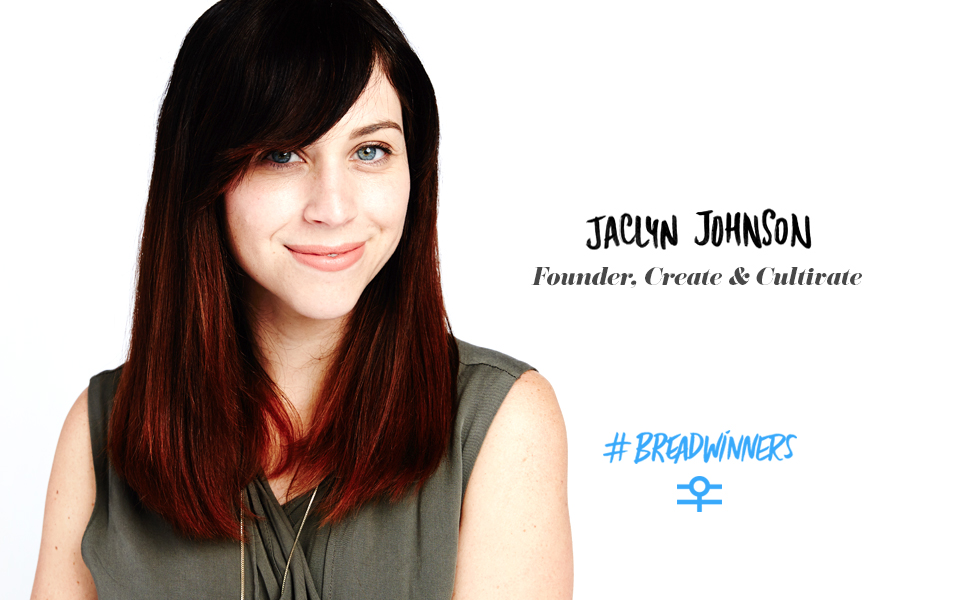
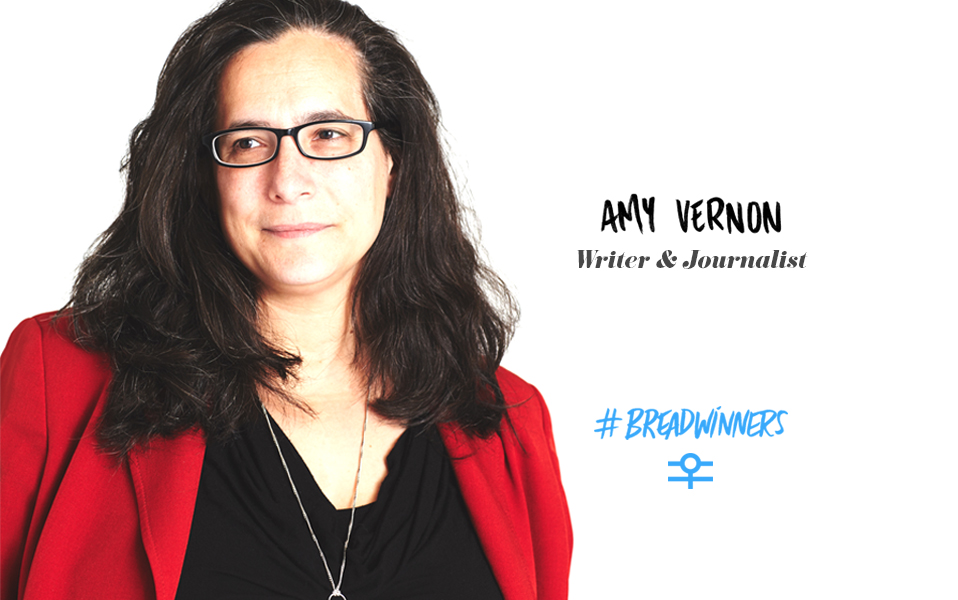

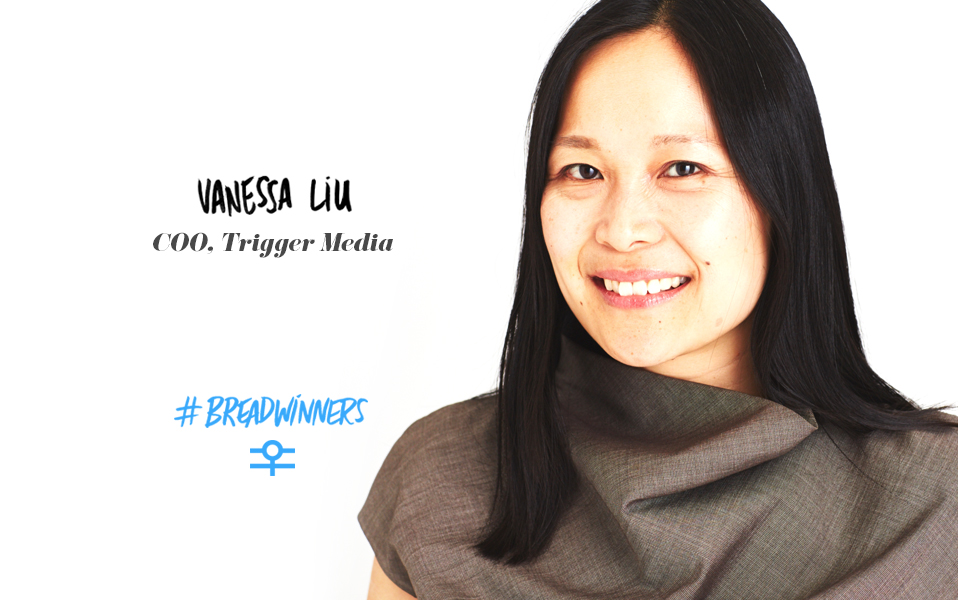
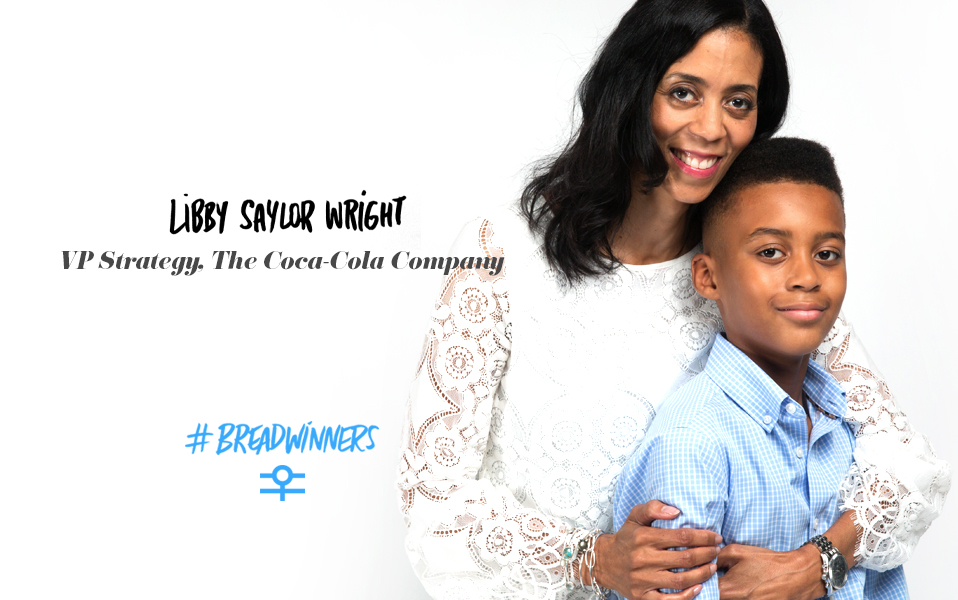

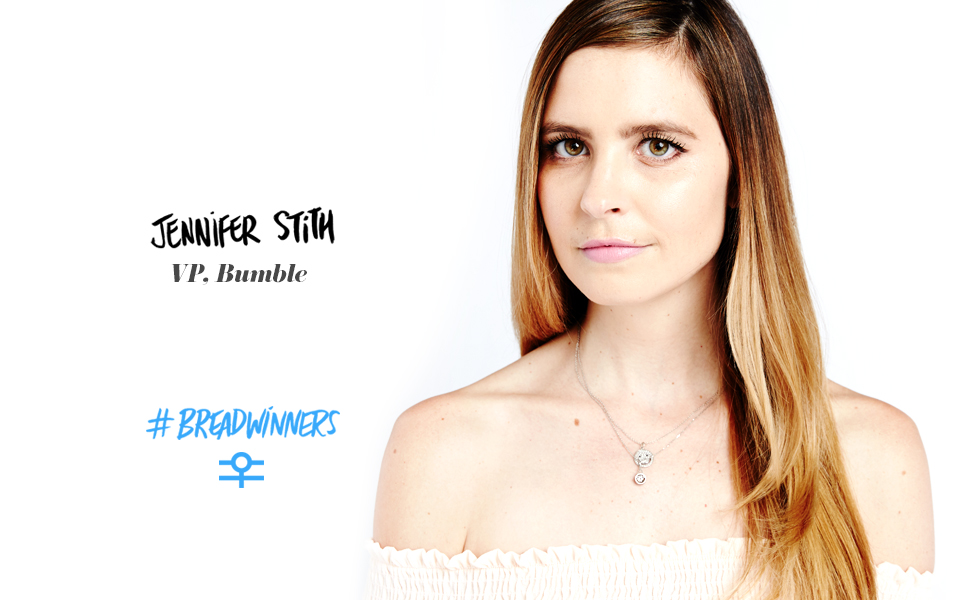
Today marks Women’s Equality Day. A date selected to commemorate the 1920 certification of the 19th Amendment to the Constitution, granting women the right to vote. Today also marks the launch of the first ever Breadwinners Campaign.
Breadwinners was conceived to highlight women who are redefining success-- women who are the primary household earners and who are changing the landscape and conversation around what it means to bring home the bacon.
The passion and project of Alisa Leonard, founder of Hello-Q, Leonard says, "The highest wave floats all the boats - as female Breadwinners we need to be that wave. I believe our greatest achievements can be to lift up other women, and in turn everyone."
"The highest wave floats all the boats - as female #Breadwinners we need to be that wave."
Tweet this.
Make no mistake. This is powerful. Female enfranchisement is no longer a demand, it’s a reality. And the female breadwinner is on the rise...
In 2013 the US Census released data showing that 40% of household breadwinners were women-- specifically mothers. According to a 2015 McKinsey report (Power of Parity), closing the gender pay gap and increasing opportunities for women would add $2.1-4.3 TRILLION to the US economy.
Women, like Create & Cultivate founder Jaclyn Johnson who has earned her success through dedication and tireless work. “If it was easy,” says Johnson, “everyone would do it. Just know to keep moving, keep pushing forward and don’t be scared to ask for help.”
Women like Jennifer Stith, VP of Bumble who says, “My entire adult life I have sought total financial independence. And though traditionally the term breadwinner has had a predominantly male connotation, today I know many couples with two people contributing as equals to the livelihood of their homes and families. In 2016, I don’t think a breadwinner needs to stand alone in a home anymore.”
A wise woman once told us, “If you can’t see it, you can’t be it.” Now you can do both. Our founder was featured, along with 34 other influential, game-changing women. Women entrepreneurs and executives across media, tech, art, finance. Those that run Fortune 500 companies and those at the helm of startups. There is no limit to who a #Breadwinner can be and we are committed to changing the conversation.
We are proud to collaborate with Hello-Q on this initiative. View the full list of Breadwinners and check out their stories and follow #Breadwinners on Instagram!
To participate in the #Breadwinners Project Survey click here. The #Breadwinner Project Survey is kicking off an ongoing research initiative into the needs and challenges of American female breadwinners. The mission of this initiative is to further our understanding of the rapidly growing female breadwinner population and use these insights shape innovative, strategic solutions for both the private sector and public sector that empower equality and inclusion for women in the work force.
We are committed to driving innovative change that empowers women in the workforce. By taking a few minutes to participate in this survey, you are helping inform and shape that change. This survey was created in partnership with Hello-Q.com, Create + Cultivate and theTACTILE.co
MORE FROM OUR BLOG
Find Out How This Cookie Maven Turned a Teenage Recipe Into a Million Dollar Business
From mom's kitchen to storefront.
Got an appetite for hearing from the leading boss women that are calling the shots in the culinary world? Get ready to grub hard on our new#CreateCultivate series: Counter Culture, where we'll be talking to prominent women in the food industry about good eats, food trends, and making it in the cutting edge cooking world.
Don't put a fork in it, because we're not close to done.
Someone once asked Courtney Cowan, founder of Milk Jar Cookies what her secret ingredient was. Her answer?
"The salt from my tears," she joked.
But it's a little more complicated than that. "The context of that statement was that, as I was preparing to open, my dad was diagnosed with lymphoma and shortly thereafter, my mom was diagnosed with breast cancer. So, between the exhaustion and stress of opening the shop, keeping the train moving forward, and worrying about them, it was a pretty tough time that was definitely accompanied by some tears."
She had also left her job in the television industry, deciding to put her whole heart, soul, and focus into Milk Jar Cookies.
"I’m a fighter for whom failure isn’t an option, so even though I had to dig deep at times, the commitment to make it work never escaped me."
"I’m a fighter for whom failure isn’t an option."
Tweet this.
Today she is casual, (dare we say?) relaxed even. "Do you think I should put shoes on?" she asks when we arrive to shoot. There are donuts waiting and a batch of fresh cookies. It's like walking into your favorite aunt's home. The one who tells you bad jokes while baking up a storm. The one you have real talk with. And we do. We talk about 20-hour days and pivotal business moments. We talk about the decision to put off having kids. We talk about the reality of writing a business plan when you have no idea how to write said plan. And we talk about her beginnings.
"When I was a kid— my mom taught me the Tollhouse Recipe," she explains. "I found myself making cookie dough anytime I could-- like every Friday night." It was in a suburb of Indiana during her teens that she started futzing with that recipe, landing on what become the base for her famous Milk Jar Chocolate Chip cookies. Her tried-and-true-and-tested by all friends and family recipe. Everyone knew, no matter the occasion, Courtney was going to show up with cookies.
It's a trait that followed her to LA and her job as a post-production supervisor in one-hour TV dramas. Per her M.O. she was bringing cookies into work, leaving them in the kitchen, and people kept mistaking them for bakery purchased cookies. At that point she was still relying on her trusty go-to chocolate chip recipe. Milk Jar now bakes 15 flavors daily.
In 2005 she stared an online cookie company (originally named Sweet Cheeks Cookies), hustling on the the side while she worked full-time in TV production. For seven years she shifted back and forth between cookies and her day job, using industry hiatus' between shows to her benefit.
In 2012 while laid up after a back surgery she realized she could either go back to TV or she could focus on baking full time. During the 8 weeks she wrote her business plan. She committed.
"I went through probably twenty iterations of a business plan," she says. "I didn't know where to start."
"I had a really hard time was putting into words why I wanted to do it and why I felt it was important. It’s just cookies. But my whole goal was to provide more than just cookies- I knew the experience was as important as the cookies themselves."
She says a resource that was immensely helpful was the Small Business Administration located in Glendale. "They have a small business development center— and it’s free," she says. "They have seminars and counselors you can have one-on-one meetings with and their connections were critical in helping connect us to a bank that would give us a small business loan."
It was on December 4, 2012 -- which, she points out, happens to be National Cookie Day— is the day they got approved for the loan. January 1, 2013 they moved into what would become the Milk Jar Cookie flagship-- "a former Quiznos," says Courtney, "that left everything. We had a Quiznos party the night we got the keys and started tearing everything off the walls. We sold everything," she says, "down to the meat slicer."
Today that shop keeps her immensely busy, but she wouldn't have it any other way. "As crazy as it sounds" she says, "my favorite time to bake is extremely early in the morning. I thrive on the busy times that require me to be at the shop at 3:30am, jamming to some music, and doing my thing. My life will never be as simple as it was before I opened the doors of Milk Jar Cookies, so those mornings when it’s just me and my cookies are special to me and remind me why I love this."
"I thrive on the busy times that require me to be at the shop at 3:30am, jamming to some music."
Tweet this.
She says it's a "cool combo" of remembering the simplicity of the days when cookies were still a hobby and relishing in how far she's come. How far she's come currently does not include kids, which, was a conscious decision she made with husband Adam when they first launched. He also worked in television (to which he has returned) and took time off to get the business up and running. "It was a solid year and a half where we worked together— and we talked about nothing but the shop. World events and then cookies."
“I’ve never worked so hard in my life," she says. "Every book says 'be ready for 12-hour days,' but we’re talking 20-hour days.” But it was something she knew she had to do. "I didn’t know if I would ever get around to doing it if I had kids. You’re not eating, not sleeping, you’re worrying all the time-- this is my baby."
Her life mantra is "if you want it make it happen." (See the chalkboard in her kitchen nook.)
"If you want it, make it happen."
Tweet this.
Next steps for making it happen for MJC is preparing for growth beyond 5466 Wilshire. They've surpassed $2million in sales in less than three years. They are focussing on shipping and delivery "which," she notes "is in high demand and requires the least amount of additional overhead." They are also currently overhauling their website to make it more user-friendly and streamline the process on their end.
And Courtney says, "I’ve begun laying the ground work for an additional baking space, which is very exciting and a new challenge to tackle."
Upcoming challenges will include the month of December. Not surprisingly the holidays are their busiest time and they joke that "Winter is coming..." Last December was Milk Jar Cookies' biggest month to date. In one day they "baked, packaged, and delivered over 3,500 cookies. It’s intense," she says, "but truly so much fun." They've also shown 20% growth in sales every month, compared to that same month the year before.
Despite growth it's vital to Courtney that "Milk Jar magic is in each cookie and every interaction."
She seems to have nailed that recipe.
Milk Jar Cookies is located at 5466 Wilshire Blvd, Los Angeles, CA 90036
More from our blog:
